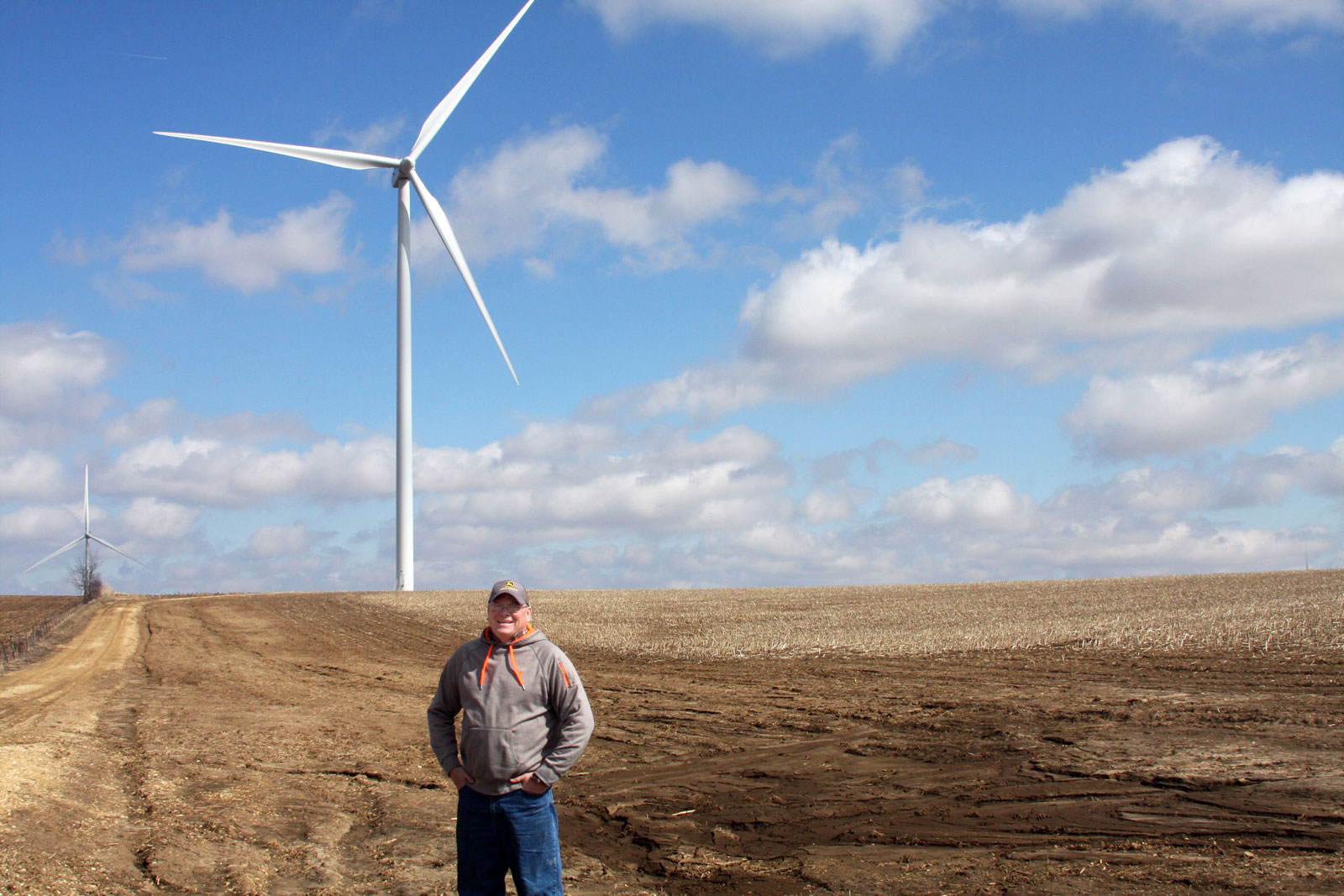
by Guest Blog | May 4, 2020 | Biogas, Electric Vehicles, Renewables, Solar, Wind
Review by Don Wichert
Michael’s Moore’s film, Planet of the Humans directed by Jeff Gibbs, is a poorly researched and conspicuously one-sided example of advocacy journalism. The film’s release on YouTube coincided with the 50th anniversary of Earth Day, prompting a well-deserved panning from many writers and reviewers with deep roots in the environmental and clean energy community.
The major shift from a world dominated by fossil fuels to one run by renewable energy is a monumental shift that cannot be made over night. Gibbs narrates a description focusing almost entirely on the slowness of this shift and on the inevitable failures of various attempts to move towards a more sustainable world. Much like evolution itself, some mutations towards this goal succeed and others don’t. It’s called “learning by doing”. Unfortunately Gibbs only describes those early experiments gone badly or interviews people who are not qualified to explain the goals and the process of development that is being considered.
Much of the reporting is one sided, not researched very well, outdated, and inaccurate and is simply inexcusable. Some examples:
- Interviews with GM officials in 2010 when the Chevy Volt was introduced. The Volt has gotten great reviews over time as a first generation Electric Vehicle that also has a gas engine. However, since it is typically recharged from the electric grid, which at the time was powered primarily by coal from the Lansing based utility in 2010; it’s portrayed as a phony sustainable alternative. No mention was made of electric cars being 85% energy efficient vs. internal engines being 15% efficient (of energy in the fuel to the wheels on the road). Since 2010, about 100,000 megawatts of coal plants have been shut down and replaced by renewable energy or natural gas. So, the grid has become greener, and therefore driving an electric vehicle has become greener over time.
- In the same ten year old footage, Gibbs interviews a Lansing Power and Light official who explains how their experimental solar electric system works. The panels are low efficiency (about 8%) and the official estimates that the football sized solar field can produce the equivalent of eleven household’s annual electricity usage. In the last ten years, solar has become more efficient and the costs have dropped dramatically. Solar is now the among the most affordable ways to generate electricity in most places in the US and the world. This is not mentioned, nor is distributed solar electric power mentioned, which uses the solar energy produced and used at the site.
- Gibbs spends a lot of time interviewing Ozzi Zehmer, author of the “Green Illusion”. Zehmer makes the outrageous claim that silicon solar cells have no silicon and instead are made of quartz, coal, and rare earth metals. It is true that some carbon is added to the solar cells in the production process, but it is subterfuge to imply that more fossil fuels are used in the process then the carbon saved by the cells over their lifetime. Many studies have shown a payback on carbon from solar cells of about two years. However, there is concern that some rare earth metals will not be enough to meet an exponential demand in the future from solar panel and other electronics. Innovation in the future may be able to resolve this apparent rare earth emerging problem.
- Gibbs interviews a “solar salesman” at a trade show who said the lifetime of solar cells is “about 10 years.” However, every solar cell manufacturer offers a 25-year guarantee on their cells to produce at least 80% of the power by year 25. Although there is output degradation of about 0.5 percent per year, it likely that solar cells will be producing power many decades past their 25 year warrantees.
- The movie then shifts to wind power and singles out one potential site on the Lowell mountain in Vermont. Gibbs interviews the group of hikers that are opposed to the 21 turbine ridgeline project because it will destroy the vista and hiking that has been there before. He does not mention the environmental review that was done for the project nor that the project was approved by a 342 to 114 vote in the local town in 2009. He does not interview anyone in the area that was in favor of the project, or mention the actual impact on hunting, hiking, sound, the fossil power that it’s replacing (or other conservation measures), or the economic impact of the project. Nope, just those against the project. Gibbs also interviews others at wind construction sites, who described the amount of concrete, steel, and weight of the wind turbine projects, as if all construction of anything was bad. Does he oppose a bridge over a creek because some steel and concrete is being used?
- Gibbs also takes a slap at hydrogen used as a fuel source for autos. Even though hydrogen is not really being considered as a near-term replacement, he gets a response from a person at a trade show that the hydrogen fuel comes from fossil fuels. He does not mention that hydrogen can be made by using electrolysis of water powered by surplus renewable energy when supply exceeds demand or that the only emissions of hydrogen combustion is water.
- The film also makes short shrift of battery technology, even though battery storage is likely to become a game changer for scaling up renewable energy. Humans are on the very beginning of a tidal wave of innovation and discovery with battery storage, with new concepts and options to store more with less weight, occurring at a rapidly increasing rate.
- Gibbs and Zehmer then go to the southwest deserts where some large scale solar thermal to electricity systems were deployed. They visit the original site of the Solar Energy Generation System I (SEGS-I), built in 1986, 34 years ago. Out of the nine systems SEGS built over this time period they focused only on the first one, where it was dismantled and apparently is being repurposed to a newer system. No attempt was made to interview the owners of the system or to show the other eight systems that are merrily producing power at one of the sunniest sites in the US. Gibbs did show some footage of yucca plants and Joshua trees being cut down for the solar array construction. No energy system is completely benign, and tradeoffs are always made. The world is a lot different than it was before the advent of farming or the industrial revolution, and ethical choices of land use can always be challenged. Manhattan, Chicago, and Madison do not look like they did 300 years ago. The projects need to file environmental impact studies before they are built, but none of that is described.
- There are criticisms of the solar power towers near Barstow, CA. I never liked this concept either: large, moving parts, low thermal efficiencies, and the need for maintenance. However, it is an example of how major infrastructures shifts occur: start out with what you know (large, thermal power plants) with those who build them (Bechtel, Westinghouse) and see what happens. These plants were started in the 1980’s, and in this case, their failures will hopefully lead to learning.
- Gibbs also attacks environmentalists for taking funding from fossil fuel interest groups like the Koch brothers and others. The optics don’t look good, but most large corporations, energy or others, have a diversified portfolio of projects with new and old technologies. Sometimes old money is a major contributor to a better world in the future like the Carnegie libraries or the Rockefeller Foundations. Gibbs targets the Green Century Fund and cherry picks several companies that have a dirty image, but fails to highlight which part of these companies are being supported in the fund.
- The film charges that any business that claims to be 100% renewably powered while remaining connected to the utility grid is engaging in deception. In point of fact, it is possible to be 100 percent renewably powered and still use some power from the grid when needed, so long as the customer offsets its draw from the grid with an equivalent amount of excess renewable energy. Until batteries are more developed, having backup sources of power, whether from the grid or other means, makes total sense. There is a picture of Tesla’s mega battery plant before the roof was covered with solar electric panels, implying that Elon Musk was lying when he said the plant would be 100 percent renewable since it would still be connected to the grid. They also showed some diesel generators being used for back-up power at an Earth Day concert.
- But Gibbs biggest gripe is with bioenergy. He never explores the major renewable premise that biomass is recent solar energy stored in plants, or that most of the biomass feedstock is from wastes that would otherwise oxidize and slowly release methane and carbon dioxide in the process. He shows the McNeil wood-fired power plant in Burlington (VT), with piles of trees and wood chips outside ready to be burned. He never explores that 95 percent of this feedstock comes from timber product residues, culls left over after other logging operations, land clearing for development, tree trimming for power lines, forest thinning, or even dedicated biomass farms for fuel. He did not interview the fuel procurement personnel or say anything about the environmental scrutiny that is required in the fuel procurement process or anything about the sustainable guidelines that must be followed.
- He also makes light of a biogas digester at a zoo that takes elephant manure to produce energy. He does not explore the concept of modern biogas digesters and how they take raw manure from large animal operations, or landfill and wastewater treatment gas and make electricity and pipeline quality gas. Nor does he say anything about the reduction in pathogens and smell from these operations and the production of biosolid fertilizers.
- The film interviews a number of people living near solid waste incinerators as part of the biomass-to-energy portfolio of bad projects. It’s true that the track record of waste-to-energy plants has been spotty at best, but this is another example where projects started in the 1980’s to hedge against the energy crisis are now no longer being built. Mistakes were made, and from them, other ways to tackle problems emerge. Figuring out how best to recycle tires, hazardous wastes, and plastics is still a major problem to be solved.
There certainly are legitimate arguments being made that we humans are having a deleterious impact on the planet: over fishing of the oceans, acidification of the oceans destroying reefs, climate change impacts of more intense and frequent storms and droughts and ecosystem shifts, ground water depletion, plastic pollution, and too many people wanting too much stuff. But in Gibbs and Moore’s eyes, the glass is not half empty, but is almost dry. He completely ignores any discussion by the vast army of individuals, governments, and companies trying to fill the glass back up with clean water. No, everything anybody does is bad and evil according to the film. That includes Al Gore, Bill McKibben (founder of 350.org), Michael Brune (ED of Sierra Club), Michael Bloomberg, whose philanthropy underwrites Sierra Club’s Beyond Coal Campaign, and Dennis Hayes, coordinator of the first Earth Day in 1970. According to Gibbs, all environmental leaders are phonies and have sold out for themselves and their imperfect goals.
Renewable energy is still at an early stage of development and huge progress is being made at an accelerating pace. The first auto was made in 1885 and every year new innovations are being made. It’s almost impossible to conceive what we humans will be using for energy in the years ahead, but progress is being made every day.
The beginning of the film asks about 10 people off the street how long they think humans will survive. Guesses range from about 10 years to infinity. So there are a lot of opinions, some positive and some negative. Unfortunately, this film is all negative. It was probably meant to sound like a canary call in a coal mine, but it was way too one-sidedly negative. Things may be bad, but looking over human history, as Dr. Pangloss said in Voltaire’s Candide, “it’s the best of all possible worlds.” Too bad Moore and Gibbs didn’t do a better job researching to provide a balanced and more positive perspective on getting to the best of all possible worlds.
I cringe thinking of how right-wing media will use this film to cast doubt on the value of renewable energy and the purposeful goals of those involved in trying to make a more sustainable human earth.
Don Wichert is a self-proclaimed “Energy Geek”, with college degrees in Geography, Thermal Engineering, and Energy Analysis & Policy. He worked at the Wisconsin Energy Office for 23 years as Chief of the Energy Resources Section, was Director of the Focus on Energy Renewable Energy Program for six years, and interim Director of RENEW Wisconsin, a group he founded in 1989, for 16 months. He has served on a number of national nonprofit boards, including the Interstate Renewable Energy Council, the Clean Energy States Alliance, and the Biomass Energy Research Center. He lives in Madison, WI.
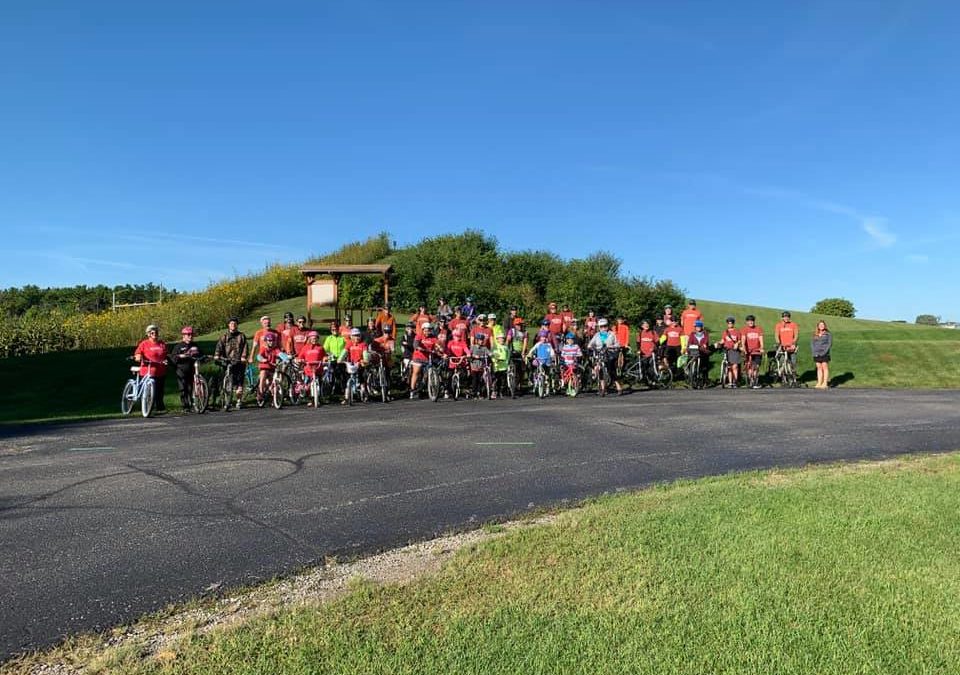
by Tyler Huebner | Sep 30, 2019 | Community, Electric Vehicles, Events, Geothermal, Hydroelectric, RENEW Wisconsin, Renewables, Solar, Wind
On Saturday, September 14th, our 7th Annual “Ride with RENEW” bike ride, held in the Fox Cities this year, was a huge success!
We started the morning at Prairie Hill Park in Grand Chute with 40 determined bike riders and 12 wonderful young ladies from the Girl Scouts of the Northwest Great Lakes! The State Representative for the area, Amanda Stuck, welcomed our riders by talking about the importance of energy, and how easy it has become to take advantage of clean energy sources.
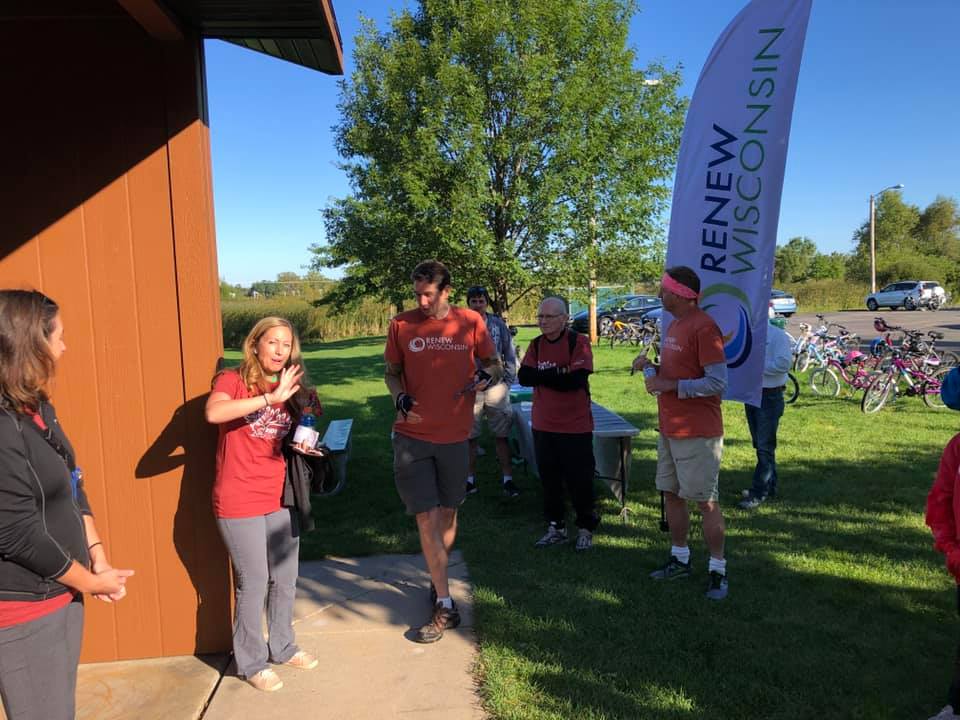
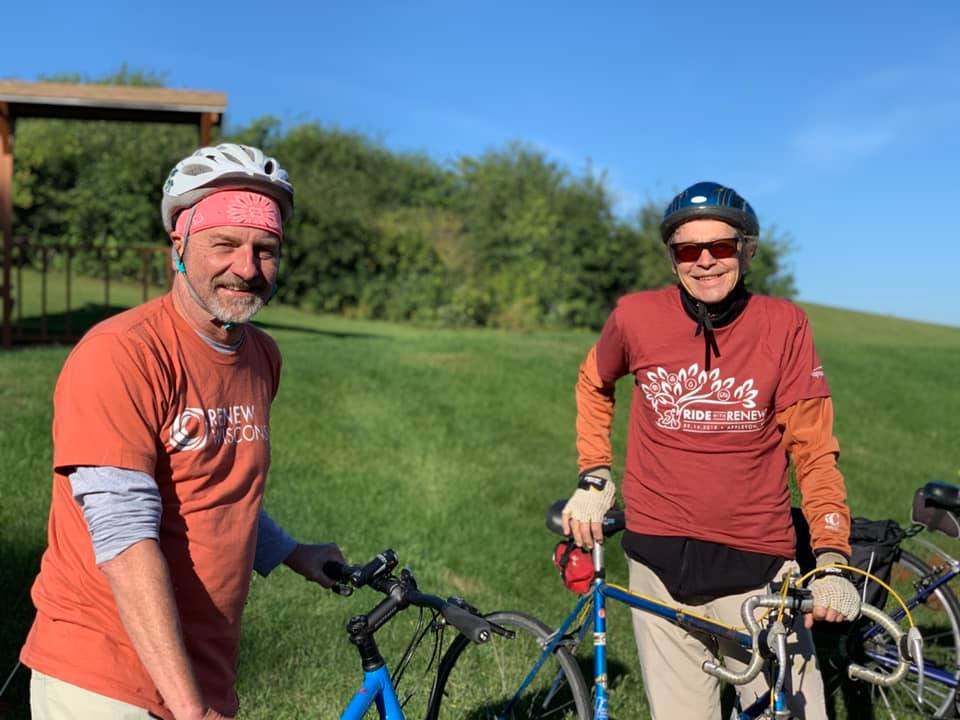
Our bike riders and Girl Scouts then set out for the Bubolz Nature Center where we explored their solar panels and microgrid, built and operated by Faith Technologies, who walked us through this one-of-a-kind facility in Wisconsin. The microgrid includes a lithium battery, a hydrogen fuel cell, and a generator, and the facility runs off the solar panels and renewable storage most of the time.
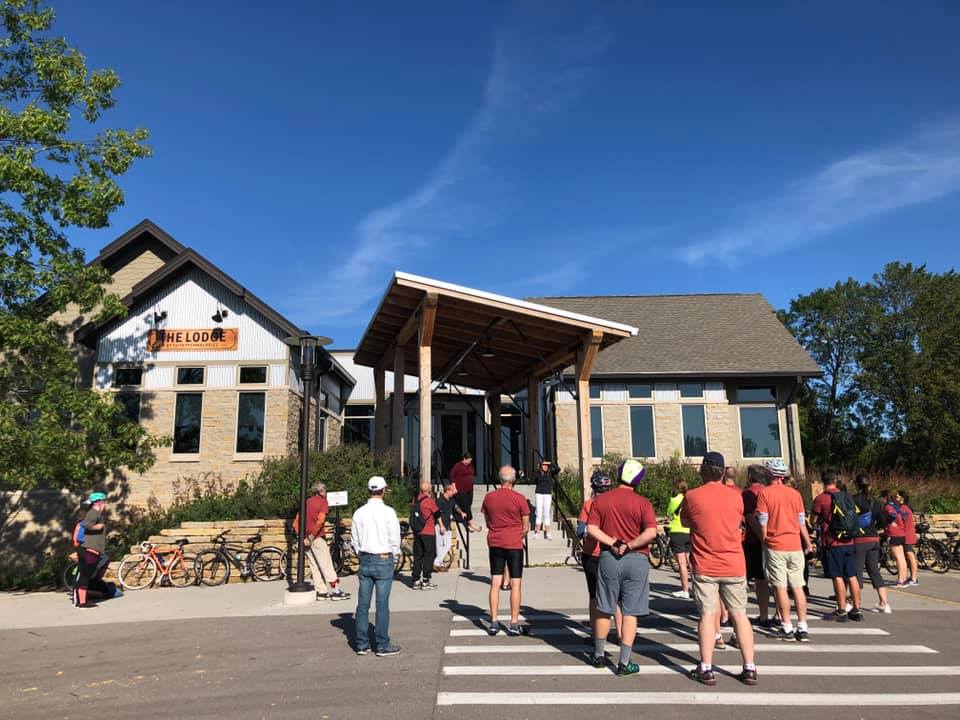
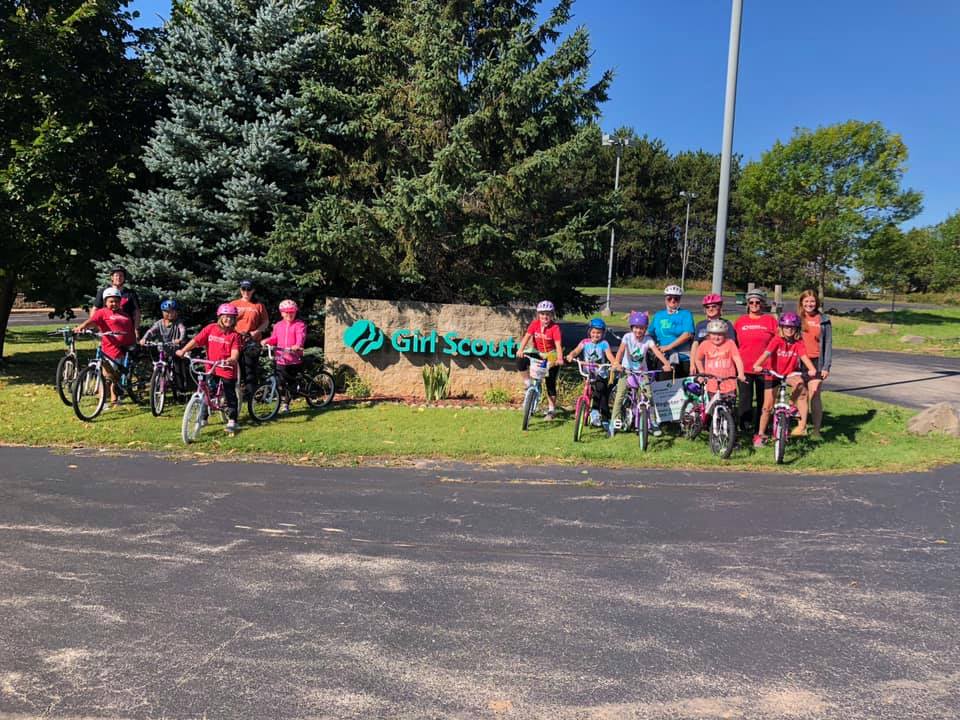
Next we biked 10 miles to Evergreen Credit Union which has become a regional leader in sustainability. With solar panels covering its roof, Roni Kasperek of Evergreen described the credit union’s migration to becoming a clean energy leader and how sustainability is a core value of the organization.
We turned Schildt Park into a clean energy mecca at lunch! Featuring pizza from Glass Nickel Pizza, we were fortunate to have the Ripon Lego League join us as they collected data from our bike riders to help them with their Lego challenge of designing a sustainable community! Our riders engaged in the Lego League’s survey, created to help the kids better understand bikers’ safety needs and how a city could better support bicycling. The Lego League kids did a great job helping to serve lunch and engage with our bikers!
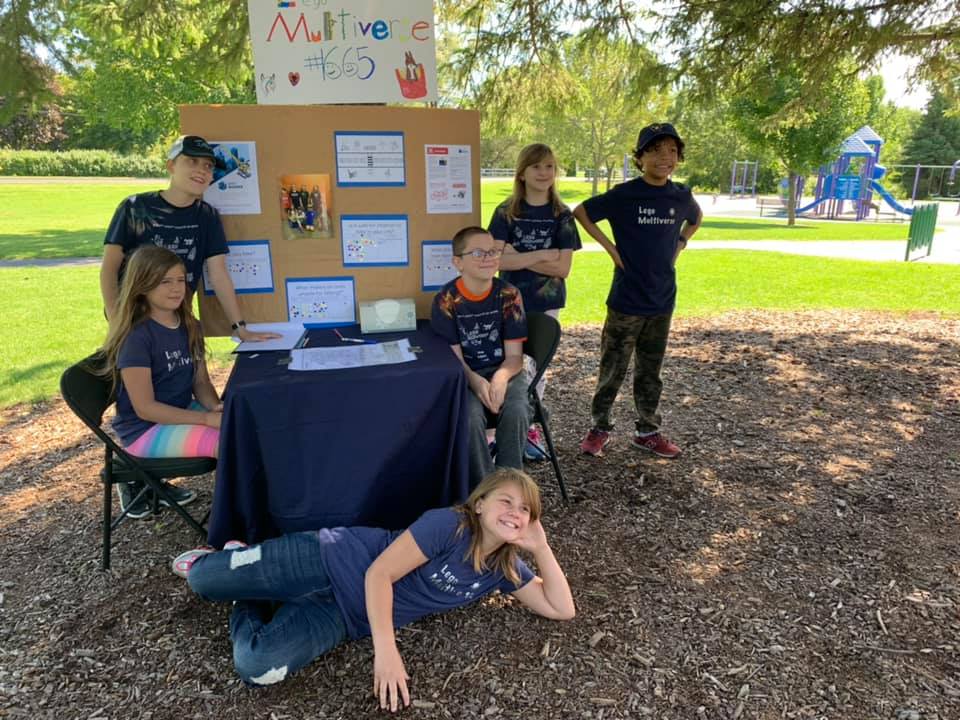
In addition, we had an electric vehicle exposition featuring 9 vehicles from 5 car brands that drive with electricity, instead of gasoline. This technology is advancing and many new types of affordable electric vehicles are coming out soon. We loved showing these cars off to our bike riders and a few members of the public, and the vehicle owners loved chatting about how much they enjoy driving electric.
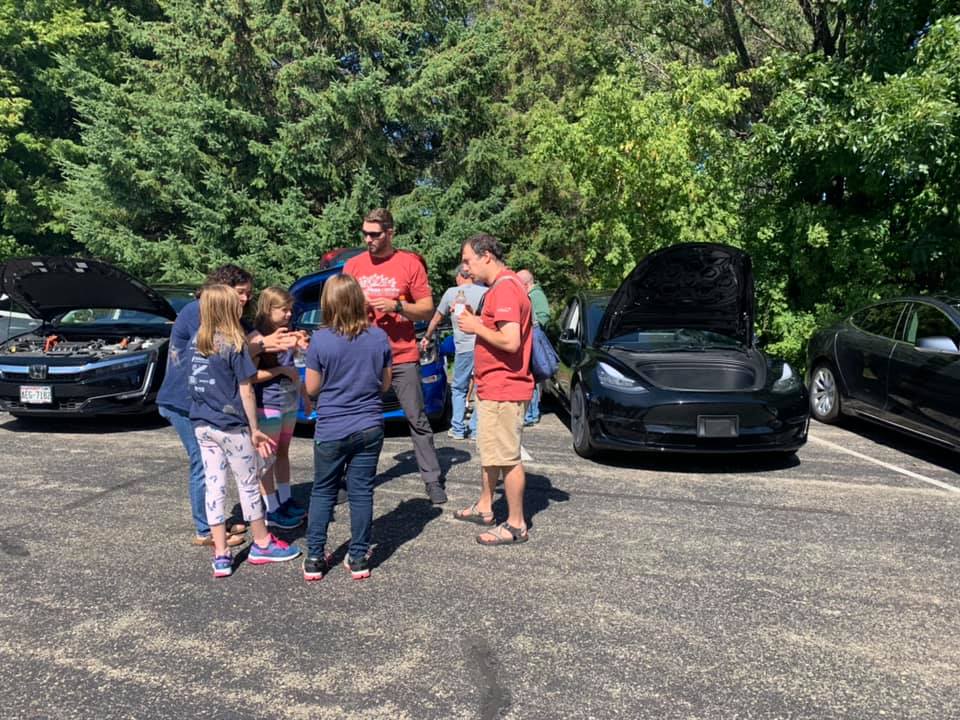
After lunch we saw small wind turbines at Essity (formerly SCA Tissue) right along the bike path. These 4 turbines were designed and installed by a former Wisconsin company called Renewegy (which is unfortunately no longer in business). Next we headed to Heckrodt Wetland Reserve in Menasha where we learned about their tremendous efforts to preserve this part of the state and how solar power is a sustainable part of their growth.
We next saw an innovative solar carport at the Petit and Dommershausen law offices in downtown Menasha, where were treated to a much-needed snack. Then we biked to RiverHeath, which is a new development in Appleton right along the Fox River. Mike Barnett of HGA described an innovative use of geothermal energy, designed by HGA and installed by G.O. Loop, that uses the temperature of the water to provide heating and cooling to the new buildings in the RiverHeath complex.
Last, but certainly not least, we biked to the first power plant in Wisconsin that delivered electricity to a customer. We were greeted by “Thomas Edison,” a generous measure provided by the Appleton Historical Society, who helped explain the origins of the Vulcan Street Hydropower Plant which was put into service in 1882 and provided electricity for lights at paper manufacturing plants as well as one home.
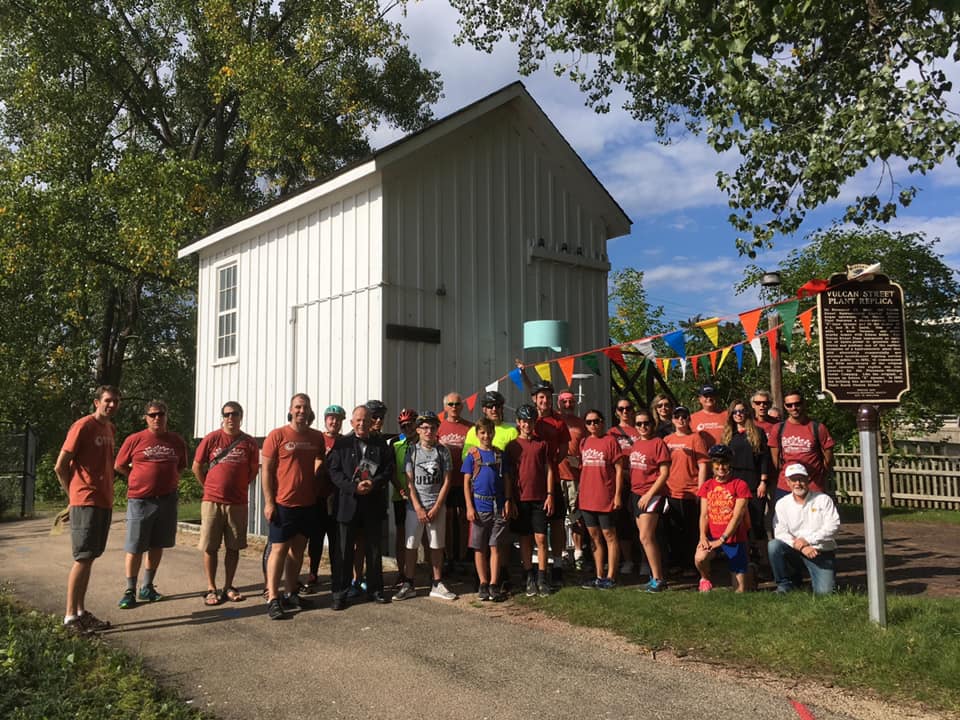
The actual Vulcan plant burned down in 1889. The Appleton Historical Society, as well as Ford Motor Company, contributed many hours and, in Ford’s case, equipment, to allow this replica of the original hydropower plant in Wisconsin to stand and to give visitors like us the opportunity to learn about Wisconsin’s energy history and see it in action.
Finally, we arrived back at Prairie Hill Park, where we enjoyed beer from Central Waters based in Amherst and celebrated a great event with our riders! The weather was outstanding, and we can’t wait to plan next year’s Ride with RENEW.
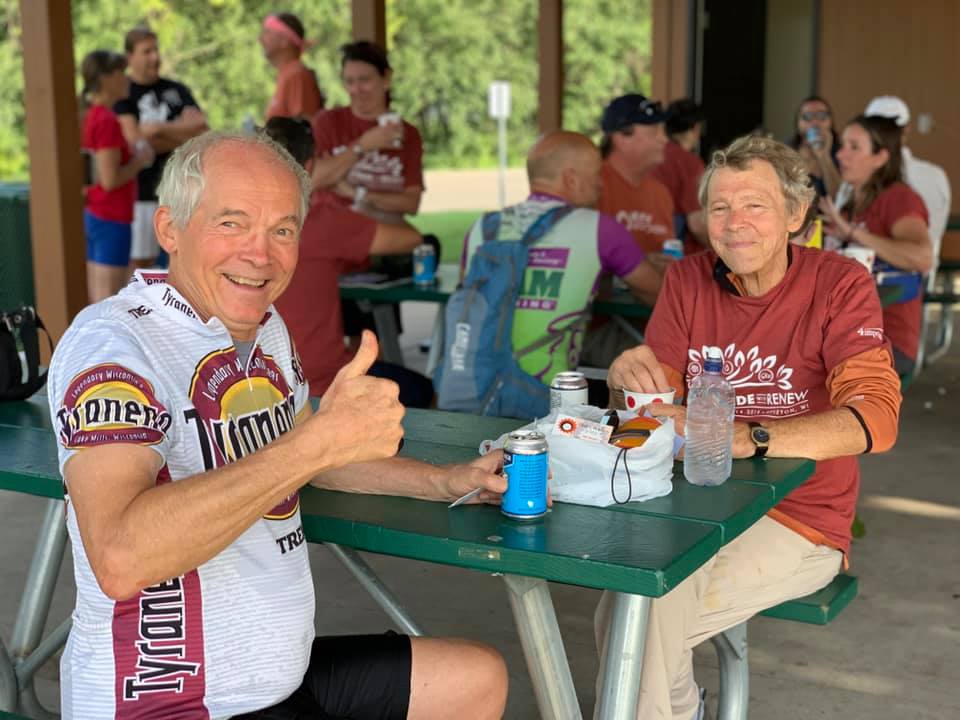
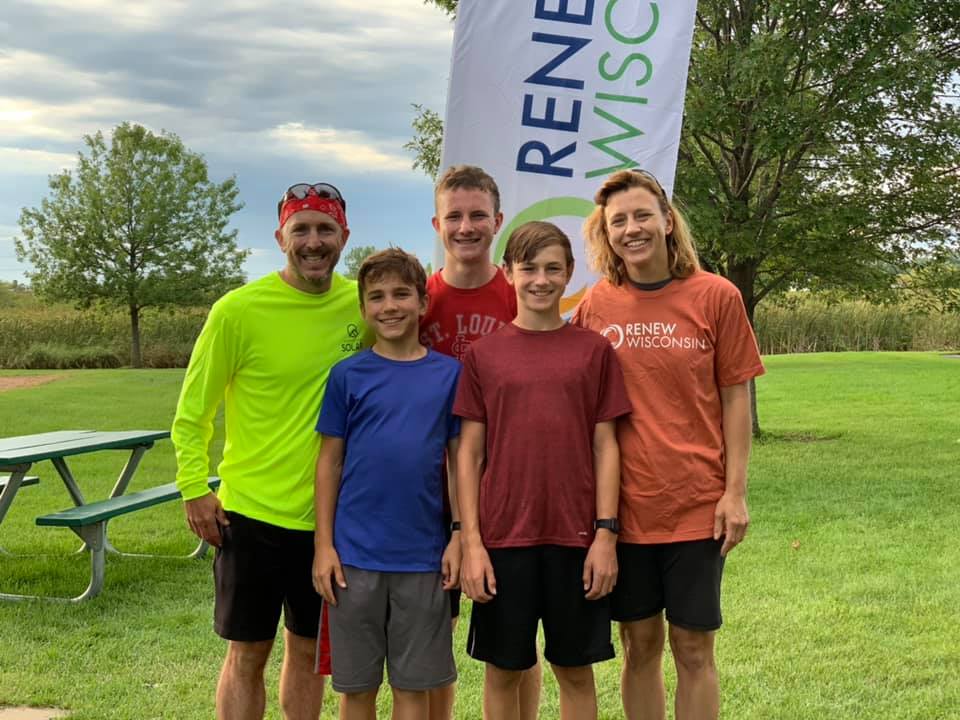
Four of RENEW staff members joined Board member Jim Funk of Energize LLC as he showed off one of Wisconsin’s earliest examples of “bi-facial” solar panels – panels that can receive light from both sides of the panel to create electricity. This installation at a carport has served as a beautiful visual example of solar energy in the Fox Cities since 2010. For example, check out the very cool design when our staff member Jim Boullion’s car was parked underneath the panels.
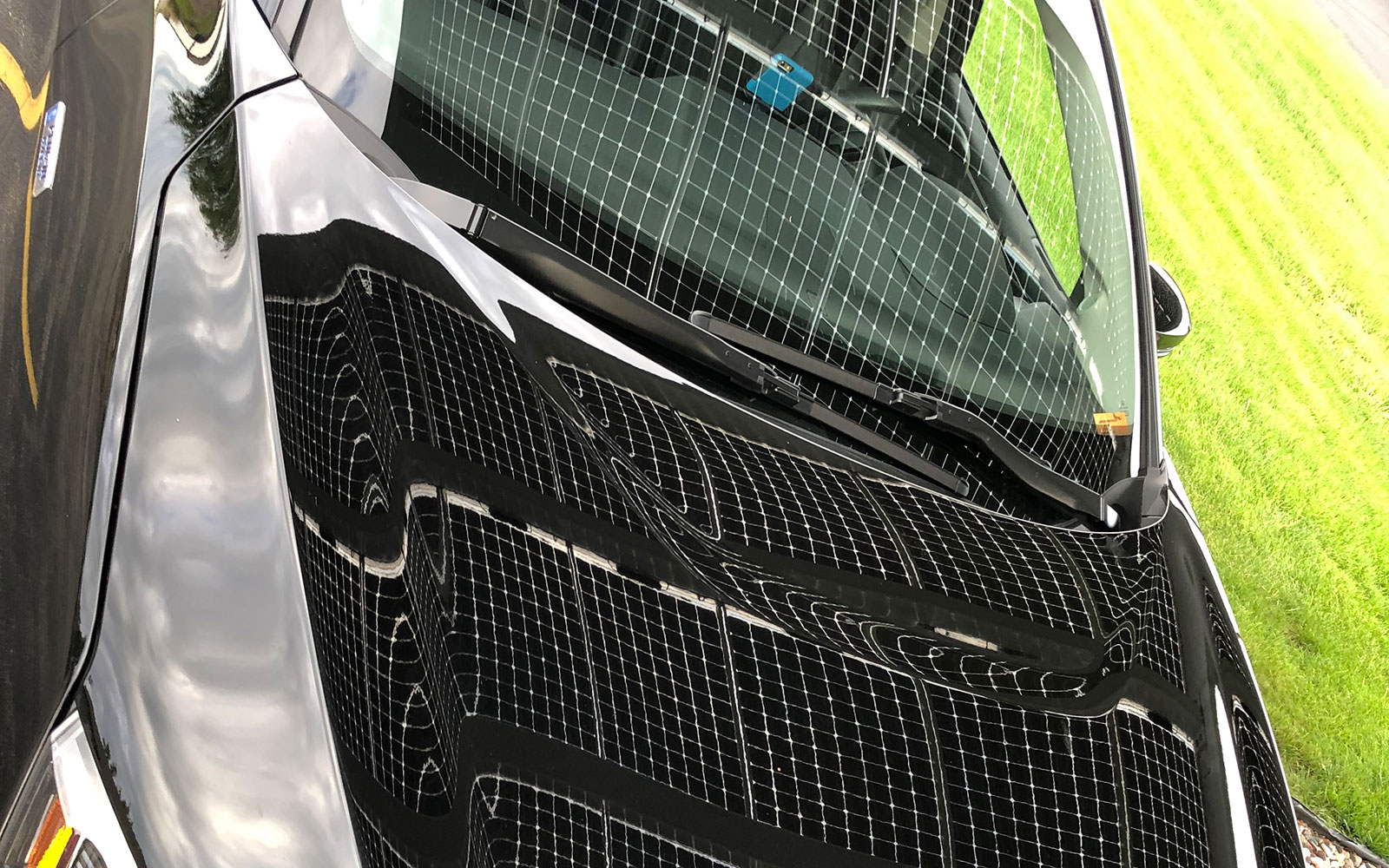
Check out our Facebook photo album to see more images of the ride!
Thank you again to all of our sponsors, shown below, all the bike riders, the Girl Scouts, Lego League, and everyone who donated to support our riders and helped us raise over $17,000 to continue our education, advocacy, and collaboration to advance renewable energy in Wisconsin!
2019 RIDE WITH RENEW SPONSORS
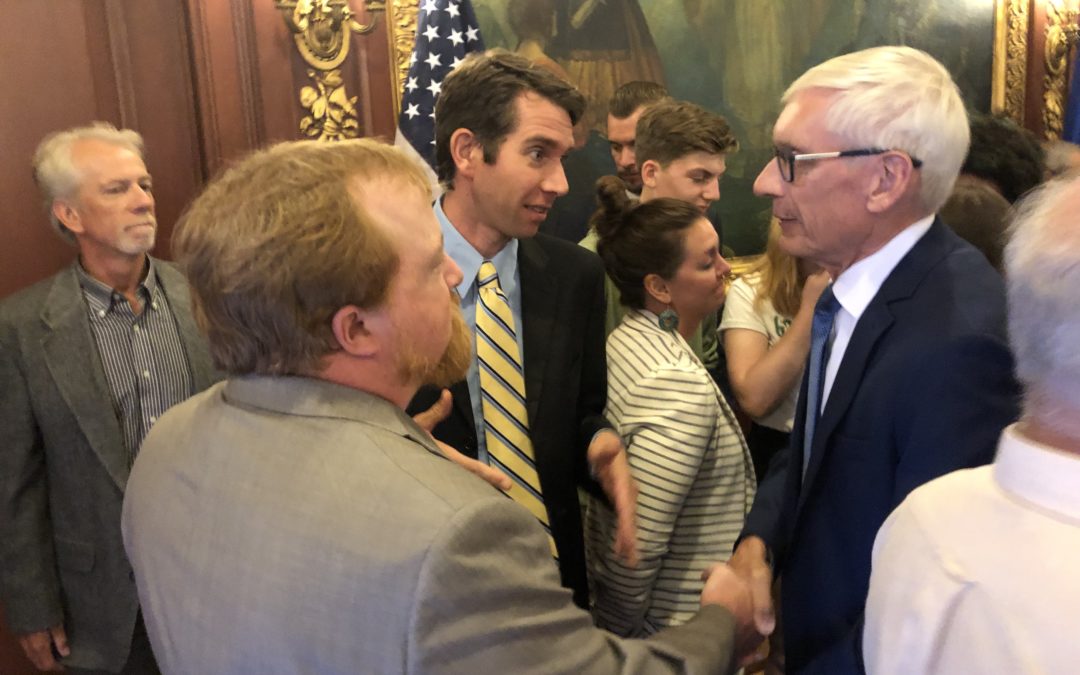
by Michael Vickerman | Sep 23, 2019 | Advocacy, Biogas, Community, Jobs, Public Service Commission, RENEW Wisconsin, Renewables, Solar, Solar for Good, Utilities, Wind
Last month, Governor Tony Evers delivered an ambitious clean energy vision for Wisconsin, which the editors of the Wisconsin State Journal aptly summarized: “Goal: Carbon-free by 2050.”
Executive Order #38 creates the state’s Office of Sustainability and Clean Energy, and directs the new office to “achieve a goal of ensuring all electricity consumed within the State of Wisconsin is 100 percent carbon-free by 2050.” This office will take the lead in planning and coordinating the Evers Administration’s efforts to greatly increase its own reliance on carbon-free electricity, and develop strategies for expanding clean energy throughout the state. The administration envisions accomplishing these goals through a partnership with other state agencies and state electric utilities.
To demonstrate that this initiative will very much be a team effort, Governor Evers was joined by Lt. Gov. Mandela Barnes, Public Service Commission Chairperson Becky Cameron Valcq and Department of Natural Resources Secretary-designee Preston Cole.
With this order, clean energy becomes again a policy priority, advanced to not only bolster the state’s economy and protect its natural resources, but also promote the health and well-being of its citizenry. What’s also notable about Evers’ initiative is the degree to which it is grounded in climate science. The order frames climate change as an escalating environmental problem that is already doing harm to the state on several fronts. An effective response from state government, therefore, demands aggressive and sustained action. Moving to carbon-free electricity by 2050 certainly qualifies on that score.
Now, an executive order is not the same thing as a law. Executive orders carry no legal weight, which explains why they are narrowly drawn to address matters that are totally within a governor’s control, such as agency priorities. Moreover, they are not binding on future governors and their administrations. That said, we are hopeful that the clean energy actions taken today by this Administration will cultivate, over time, buy-in from state legislators, and that from this order will emerge comprehensive, forward-looking policies that will put Wisconsin on track to becoming a renewable energy leader.
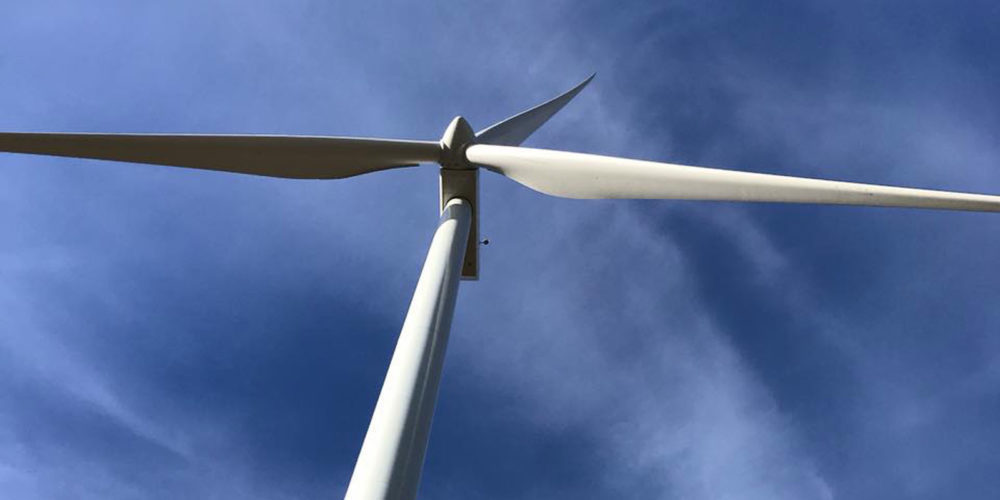
Wisconsin utility commitments set the stage
As audacious as it may appear, Evers’ clean energy goal is actually in line with recent utility commitments to decarbonizing their generation mix. Whether set at 80% or at 100% by 2050, the level of carbon reductions that Wisconsin electric providers have publicly embraced are ambitious, when compared with current levels. In 2018, the percentage of renewable and nuclear generation combined, relative to total sales, was approximately 25%. We’ll probably need to quadruple today’s volume of carbon-free electricity, depending on how much energy efficiency reduces our consumption compared with how much transportation and other direct uses of fossil fuels become electrified by 2050. No matter what happens, this transition will require a concerted and sustained push on the part of every electric provider.
Fortunately for the state’s utilities, there has never been a more propitious time to invest in carbon-free electricity, especially from wind and solar plants, than right now. The capital costs of new wind and solar farms are at their all-time lows, and their operating costs are a fraction of what it costs to buy the fuel for coal and natural gas plants operating today.
The signs that utilities are seizing this opportunity are multiplying. As they move to permanently shutter older and less efficient coal- and natural gas-fired generators, Wisconsin power providers are either busy purchasing more renewable electricity from new plants or building more solar and wind farms for themselves.
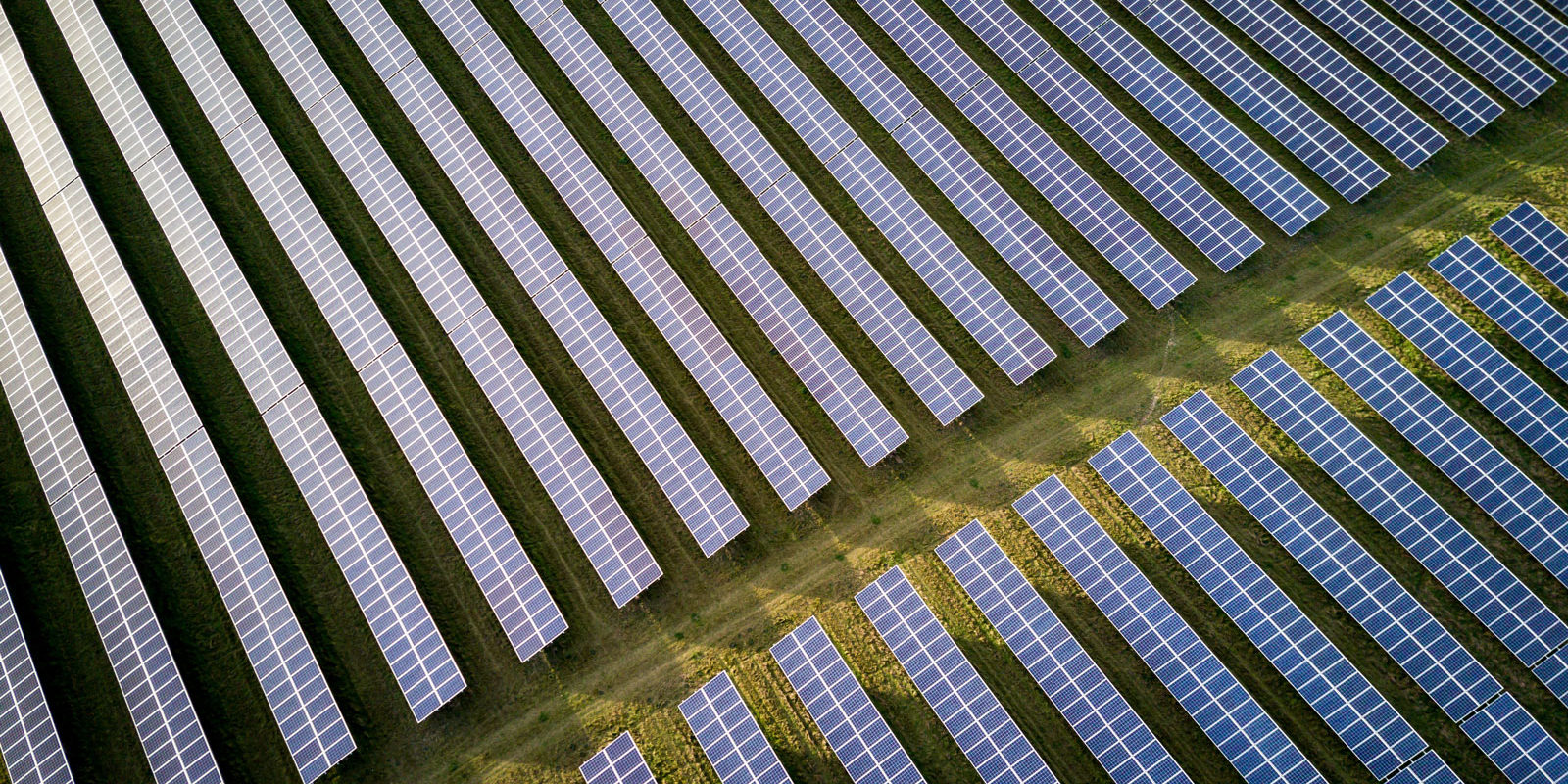
Powering up Wisconsin agriculture
In the week following Governor Evers’ Executive Order, ground was broken for the Two Creeks plant, one of the two large solar plants owned by Madison Gas and Electric and WEC Energy. Located a mile from the Point Beach Nuclear Power Plant, this 800-acre solar farm will, by itself, more than double existing solar capacity when completed next year, from 120 megawatts (MW, measured in AC or alternating current) to 270 MW.
That total will more than double again when the 300 MW Badger Hollow solar farm, located in Iowa County, becomes fully operational at the end of 2021. And other Wisconsin utilities, WPPI Energy and Dairyland Power, have signed power purchase agreements from 249 additional megawatts of solar from two projects, both of which are now seeking approval from the Public Service Commission and could also be built in 2020-2021.
Solar farms deliver far more value to the public and the planet than simply megawatt-hours of electricity produced and tons of carbon dioxide avoided. There are also the jobs that go into the construction of these arrays, the revenues that allow farmers to keep farming their land, revenue payments to local governments that host the projects, and the rich habitat for pollinators and wildlife that is created as the soil recharges. Harnessing solar energy for productive purposes has been and will continue to be integral to Wisconsin agriculture.
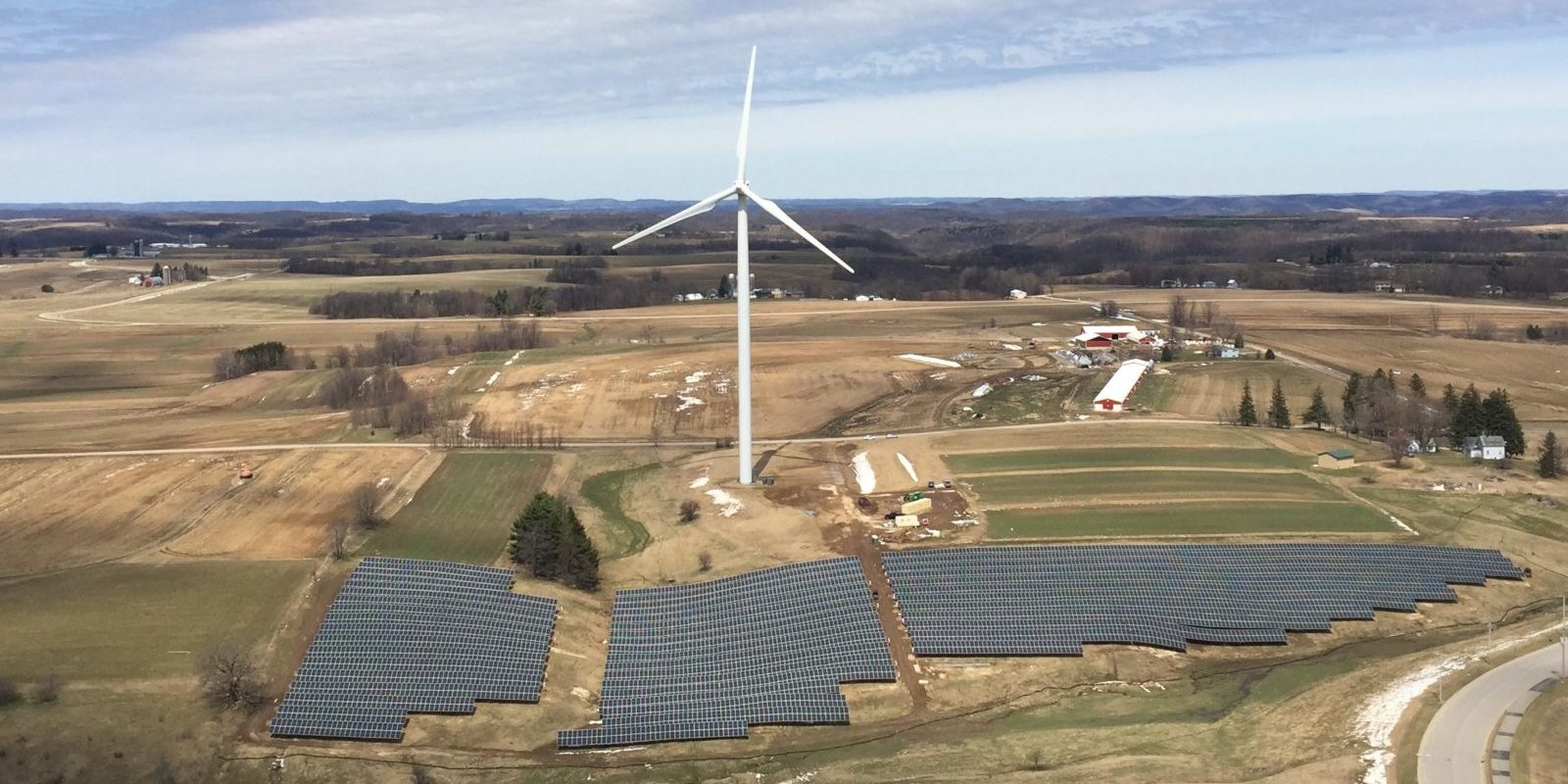
Meet the 100% renewable energy club
To put an exclamation mark on the last point, one of the most productive actors on the American agriculture scene—LaFarge-based Organic Valley Cooperative—financed the construction of two smaller solar farms in western Wisconsin. These two arrays—one in Arcadia and the other in Cashton—were energized last month and are now sending power into the grid.
That new increment of renewable electricity, when added to Organic Valley’s previous investments in solar and wind power, will enable the cooperative to offset 100% of its electricity use from zero-carbon, renewable sources. Organic Valley is the largest U.S. food brand to have accomplished that feat.
Organic Valley is the second Wisconsin enterprise to achieve a 100% renewable electricity goal. The first was La Crosse-based Gundersen Health System, which achieved that milestone five years ago through a combination of intensive efficiency measures and small-scale renewable power projects, usually off-site. In addition to reducing its energy overhead and passing the savings along to the people it serves, Gundersen wanted also to lead by example, demonstrating to the health care industry that sustainable energy is “healthy, socially responsible and economically beneficial.”
It is not unrealistic to expect that, in the next 10 years, hundreds of businesses and local governments will manage to achieve the same feat pioneered by Gundersen and Organic Valley.
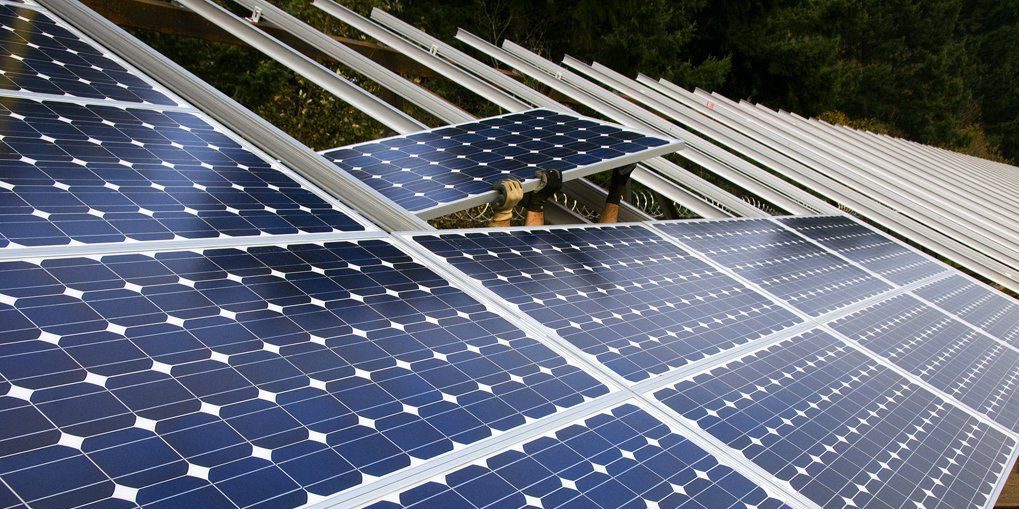
Connecting customers to solar power
When Gundersen pursued energy efficiency to reduce its energy overhead and generate carbon-free electricity as offsets, it had to settle on a path that effectively bypassed the electric providers serving their facilities. But some utilities are no longer content to stand on the sidelines while their customers sponsor new clean energy generation by their own initiative. Newer services such as shared solar and renewable energy sleeve tariffs enable self-selecting customers and utilities to partner on new clean power projects.
For example, Xcel Energy’s Solar*Connect Community program has been particularly successful in eliciting customer subscriptions to purchase electricity produced from new solar arrays in western Wisconsin. While there is an up-front cost to this service, the price of solar power is fixed, and may over time become less expensive than standard electricity, depending on the size and frequency of future rate increases.
It’s worth noting that this is not a required service in Wisconsin, and therefore many residents and businesses here do not have access to a utility-provided shared solar service. Expanding shared solar throughout the state would allow more residents and businesses to benefit from the clean energy evolution.
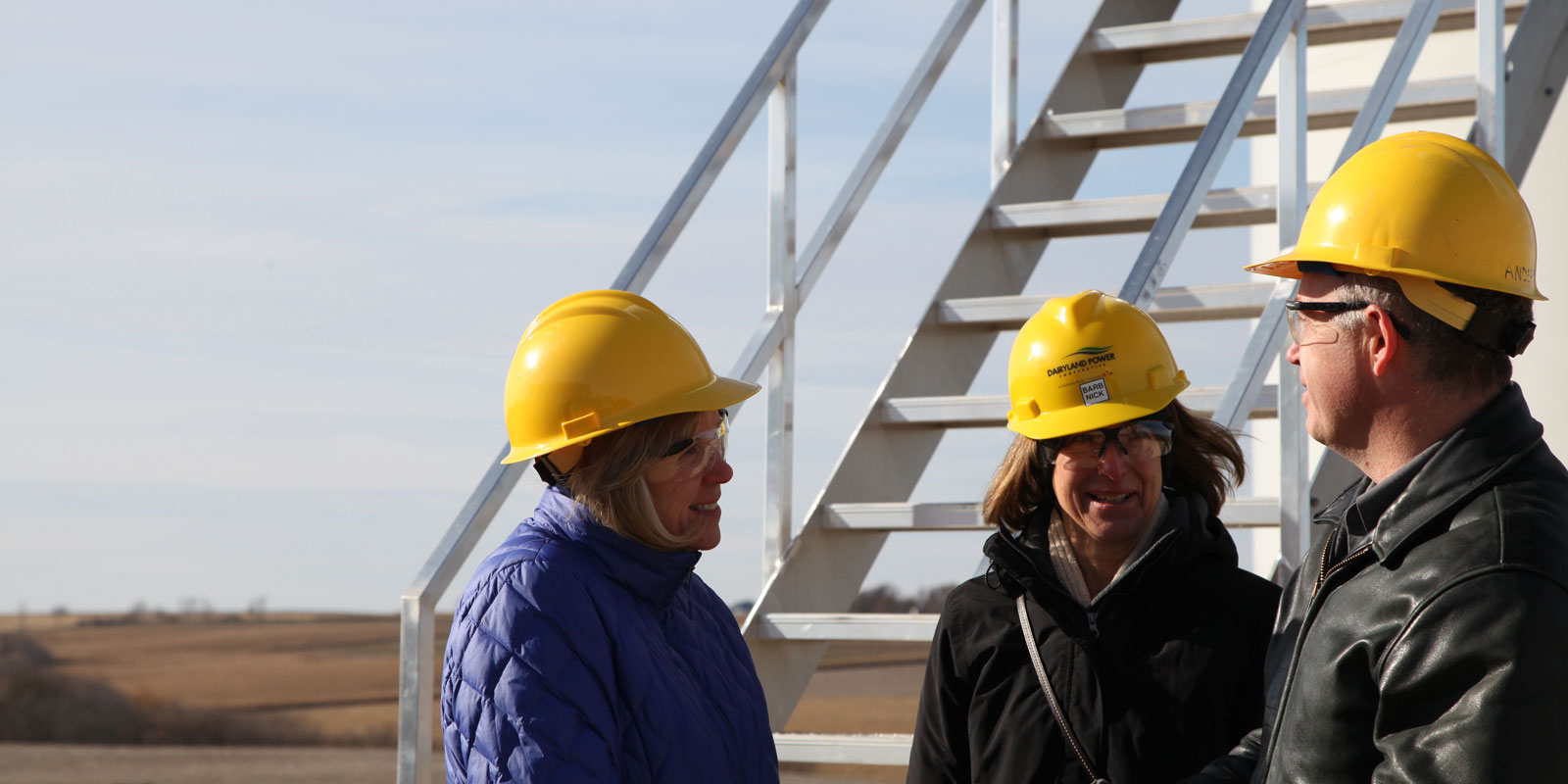
Wind power returning for duty
Back in 2006, when Wisconsin’s renewable energy standard was raised to its current level, wind power was poised to become the workhorse of the renewable electricity world. It did become so in several states, among them Texas and Iowa. But while wind power supplies 16% of Texas’ electricity and nearly 40% of Iowa’s power, Wisconsin’s rancorous siting and permitting climate has severely hobbled wind’s growth here since 2011. Right now, wind accounts for about 2.5% of electricity produced in the Badger State. Wisconsin utilities own, or buy power from, wind farms in other states which, if included, brings the total amount of wind being credited to Wisconsin customers to about 7% of the state’s electricity consumption.
Wind development activity is beginning to rebound, however, especially in the southwestern part of the state. But it will need to spread beyond the small pockets of the state where the current population of wind farms now operate. With capital costs going down and turbine productivity going up, wind development can occur cost-effectively over a wider swath of Wisconsin than what was considered suitable 10 years ago.
And why not include Lake Michigan among the areas that can host tomorrow’s wind farms? Engineering advances and improvements in foundation design make offshore wind power in waters deeper than 100 feet a feasible option. The ripple effects through the eastern Wisconsin economy would be substantial, especially for companies that manufacture cranes and marine construction vessels. Offshore wind can happen here with the right leadership.
But while the picture for wind power going forward remains uncertain, it’s all systems go for solar power. What is now an affordable resource for power providers is also an equally attractive option for electricity customers of all sizes, classes, and groupings, whether the solar array is dedicated to one home or business or to a school district or local government. Partnerships forming around solar energy are multiplying across the state and much of the nation.
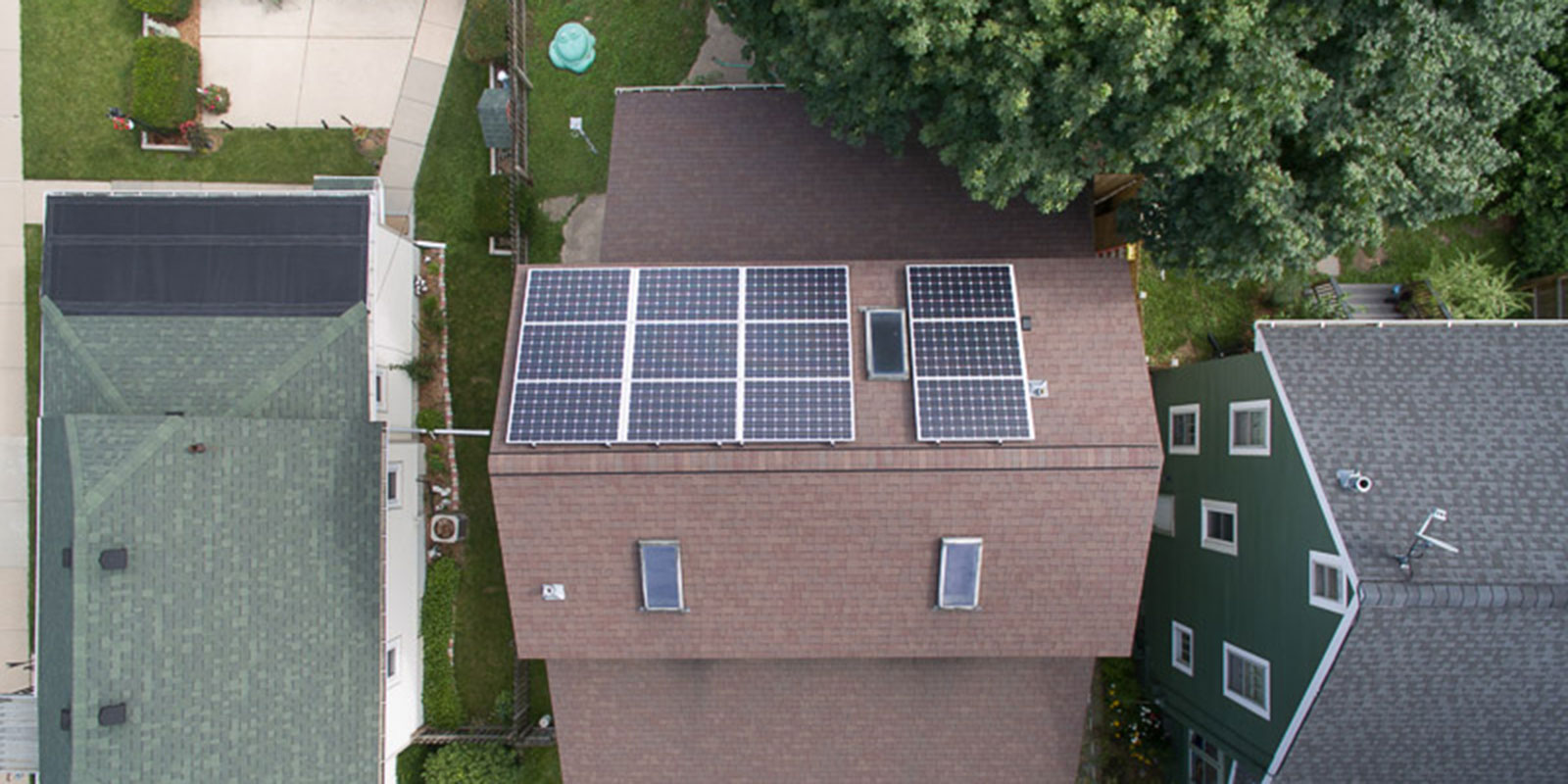
Customer-sited generation growing, but needs to be unleashed
From 2013 to 2018, customer-sited generation was the primary bright spot in Wisconsin’s renewable energy landscape. Customer-sited solar grew from 17 megawatts in 2013 to about 80 megawatts by year-end 2018, and the market continues to grow as the cost of installing solar power has declined. Initiatives like our Solar for Good and Faith & Solar programs have made solar power an affordable option for more than 40 nonprofits across Wisconsin, with 30 more working on projects this year.
But we know there are speed bumps, and it’s past time to fix them. The 20 kilowatt net metering threshold set by most of Wisconsin’s utilities often and unnecessarily limits the ability of customers, especially larger businesses and nonprofits, to supply themselves with renewable power. Generators that exceed the net metering threshold are penalized for exporting power to the grid.
This situation has especially been hard on Wisconsin’s biogas generators. After their initial contracts expire, biogas generators face the prospect of a 60% reduction in revenue flow. Many have already stopped generating electricity as a result, and are now flaring biogas instead.
With Wisconsin utilities now clearly moving towards building renewable power and retiring coal plants, it’s time to equalize the treatment of customer-sited renewable generators relative to large solar farms. If utilities need more daytime power capacity, they should credit distributed generators like solar and biodigesters at the same level that is accorded to their own renewable power plants. Our net metering rules need to be strengthened to capture more of the great potential and benefits that we know distributed generation brings to Wisconsin.
It’s also time to enable financing of clean energy systems, such as third-party leases and power purchase agreements, so that more low- and moderate-income Wisconsinites can take advantage of “pay as you go” solar energy financing options which are commonly available in more than half of the United States.
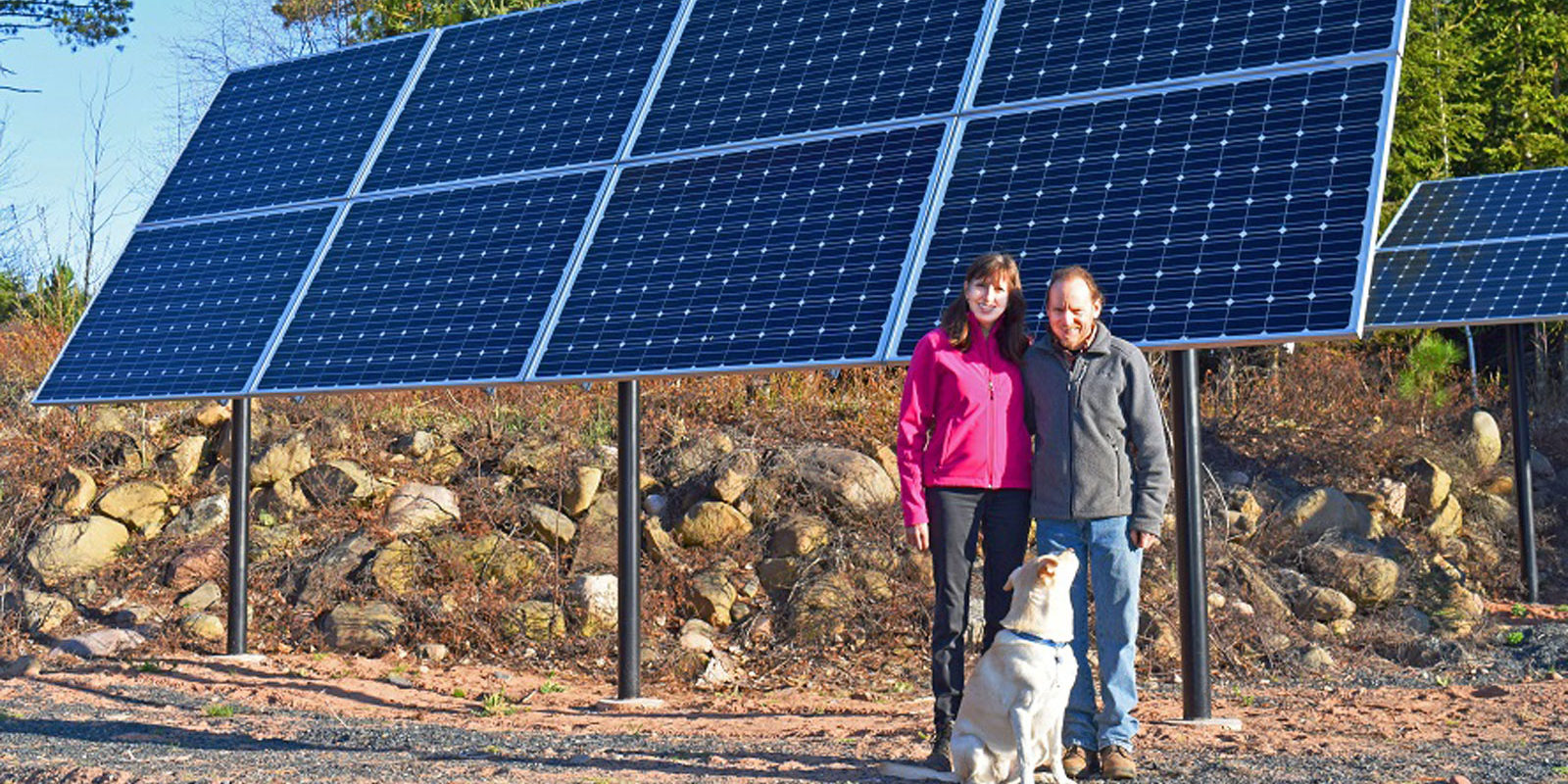
The value of partnerships
A particularly powerful example of solar partnerships can be found in the Ashland-Washburn-Bayfield area. Operating on a shoestring over its four-year history, Cheq Bay Renewables, an all-volunteer organization, has designed and developed several community-scale projects notable for their affordability and popularity. One of these is a solar group buy program, now in its second year, that has yielded nearly one megawatt of new capacity serving area homes, farms, and small businesses.
Supported initially by a $10,000 Solar in Your Community Challenge grant from U.S. Department of Energy (USDOE), the organization’s latest venture is set to deliver more than a dozen solar systems to schools, county-administered housing, wastewater treatment plants, and other public facilities in the Washburn-Bayfield area. Cheq Bay’s next project after that will put solar systems on three tribal buildings serving the Bad River Band of Lake Superior Tribe of Chippewa Indians. Half the funding for Bad River’s solar systems will come from U.S. DOE.
Through a combination of creativity, resourcefulness, and hard work, Cheq Bay Renewables has been the catalyst for the renewable energy transformation occurring in northern Wisconsin. Though the progress it has made thus far is nothing short of amazing, it wouldn’t be happening without all the partnerships that Cheq Bay has meticulously cultivated with local governments, federal and state agencies, electric providers, and sustainable energy professionals.
Partnerships like these are essential for getting the job done. And Executive Order 38 sets the stage for a new round of partnerships and collaboration to achieve the bold vision for Wisconsin’s clean energy future that Governor Evers and his Administration now embrace. From what’s happening on the ground, we know many initiatives are delivering results today, and these bright spots will be the foundation to creating a statewide clean energy success story.

by Jodi Jean Amble | Sep 10, 2019 | Community, Electric Vehicles, Events, Geothermal, Hydroelectric, RENEW Wisconsin, Renewables, Solar, Solar for Good, Wind
Ride with RENEW to highlight area renewable energy projects.
On Saturday, September 14th, RENEW Wisconsin will host its 7th annual “Ride with RENEW” bicycle tour of renewable energy projects in Appleton, Grand Chute, Neenah, Menasha, and Fox Crossing, WI. All event proceeds support RENEW Wisconsin’s ongoing work to advance renewable energy in Wisconsin.
Riders will travel approximately 30 miles on paved roads and bike paths to visit solar, geothermal, wind, and hydropower energy generation facilities in the area. Riders can also participate in an electric vehicle “ride and drive” event as part of National Drive Electric Week.
Riders will depart from Prairie Hill Park at 9 AM. The total tour time will be approximately 7 hours (including stops at renewable energy sites) and actual riding time will be approximately 3 hours. Those not able or wanting to bike the ride can register as a non-biker and can use their own vehicles to transport themselves to the various tour stops.
Participants will get an inside look at some of the area’s leading renewable energy projects and will enjoy breakfast, lunch, and beverages along the way. They will visit with installers and workers who are advancing renewable energy every day, and hear from customers about why clean energy works for their businesses and communities.
The day’s tour will include stops at the following clean energy facilities:
- Gordon Bubolz Nature Preserve – The Gordon Bubolz Nature Preserve is a 700-acre facility used for recreation, conservation, and education. In July 2018, the nature preserve unveiled its new clean energy microgrid composed of solar panels, battery system, and software system.
- Evergreen Credit Union – With a mission to be the most environmentally responsible credit union in the nation, Evergreen Credit Union installed a solar array at their Appleton facility. The solar array produces enough electricity to satisfy 85% of the credit union’s annual electricity demand.
- Electric Vehicle Ride and Drive at Schildt Park (Neenah) – As part of National Drive Electric Week, join RENEW Wisconsin and many Fox Valley sustainable businesses to learn about and test drive electric vehicles and electric bicycles. The event will overlap with Ride with RENEW’s lunch hour.
- Essity Wind Turbines – Essity is a global company that manufactures hygiene and health products. In 2007, Essity installed a 20 kW solar PV system, and in 2010, Essity installed four wind turbines that generate 80 kW of energy.
- Heckrodt Nature Preserve – Heckrodt Wetland Reserve, a Solar for Good grant recipient, is a 76-acre urban nature reserve. In 2018, Heckrodt installed a 19.6 kilowatt solar panel system to offset 5,000 pounds of CO2 emissions.
- Petit & Dommershausen, SC Law Offices – The Petit & Dommershausen Law Offices have embraced solar energy at their Menasha and Oshkosh locations. After installing a 20.7 kW solar carport array at their Menasha location in the fall of 2017, Petit & Dommershausen is offsetting approximately 81% of their Menasha office’s annual electricity usage.
- RiverHeath – RiverHeath Community is a vibrant apartment and retail area that was redeveloped from an urban brownfield site on the Fox River. Buildings utilize an innovative river based geothermal heating and cooling system that minimizes the site’s energy use and carbon intensity while reducing first costs compared to a conventional ground source geothermal system.
- Vulcan Street Plant – The Vulcan Street Hydroelectric Central Station, the world’s first Edison hydroelectric central station, began operation in 1882 in Appleton. The output of the original generator was about 12.5 kilowatts. In 1891, the plant burned down, and a replica of the plant was later built on South Oneida Street.
- Schmidt Brothers Solar Canopy (add-on stop for non-bikers) – This 20kW Bi-Facial Solar Cantilevered Parking Canopy benefits from added generation from reflection below when snow covers the lot and when white or other light-colored vehicles park beneath it. The cantilevered design was specifically implemented to provide open and clear access to all parking spaces.
- The ride will conclude at Prairie Hill Park for refreshments at around 4:00 p.m.
Registration for the ride is open through September 14th. The cost is $45 for members of RENEW Wisconsin, $55 for non-members, and $75 to both register for the ride and become a member of the organization for one year. All donations to RENEW Wisconsin for this charity bike ride are matched up to $15,000 by generous donors John & Mary Frantz of Madison!
Individuals and businesses can donate to RENEW Wisconsin or in support of a rider, donate to RENEW to contribute towards a $15,000 matching donation, or volunteer on ride day.
“We are very excited to tour some of the Fox Cities’ great renewable energy projects on Saturday, September 14th,” said Tyler Huebner, Executive Director of RENEW Wisconsin. “This tour allows us to showcase a variety of ways to produce homegrown, clean energy right here in Wisconsin and for our team to engage with renewable energy advocates in the Appleton area. We’ll be learning about wind, solar, geothermal, and a hydropower plant that is part of renewable energy history as being the first electric production in Wisconsin. This is a really fun event where you can meet great people, help a good cause, and learn together about clean energy in Wisconsin.”
Sponsors of the Event include Eland Electric, Energize LLC, HGA, North Wind Renewable Energy Cooperative, Appleton Solar, Arch Electric, Clean Fuel Partners, G.O. Loop, Petit & Dommershausen, SC Law Offices, RiverHeath, Velocity, Wegner CPAs, 4imprint, Central Waters Brewing Company, Chain Reaction Cyclery, Glass Nickel Pizza Co., and Sturdy Bag Designs.
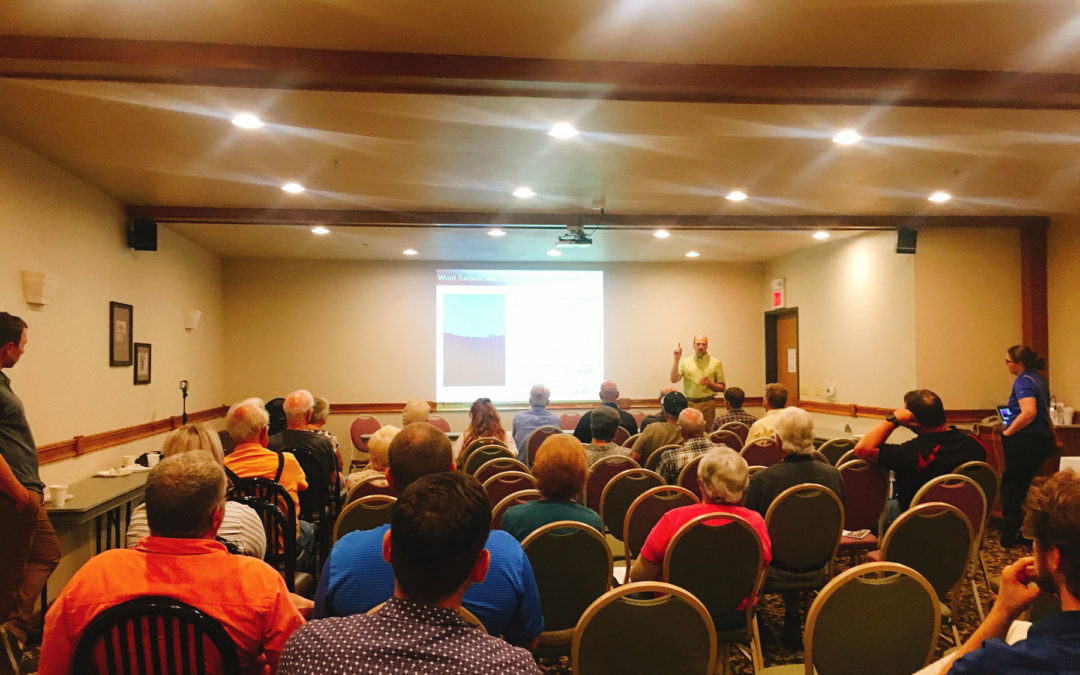
by Michael Vickerman | Aug 19, 2019 | Renewables, Wind
MONROE, Wis. – The subjects of wind power, noise, and health impacts converged and took center stage at an August 6 educational forum held at the local Super 8 Motel, a few miles northwest of the proposed location for the hotly debated Sugar River Wind Farm. RENEW Wisconsin and Clean Wisconsin teamed up to organize the forum, which drew about 25 people from around the area.
Proposed by EDF Renewables, one of the largest wind development companies active in North America, the Sugar River Wind Farm would consist of 24 utility-scale wind turbines located in the Town of Jefferson, which borders Illinois. The proposal, now under review by the Green County Zoning Administrator, must comply with the siting standards established by rule in Chapter 128 of the Public Service Commission’s code.
The education forum came at the heels of a public hearing on the proposed wind farm held at the Green County Courthouse in Monroe. At the July 30th hearing, about 30 Green County residents expressed their views on the Sugar River project. Many of those who spoke expressed concern about sound from the turbines, which some believe have adverse health impacts.
The August 6 event led off with a presentation by Michael Hankard, a Verona-based expert on environmental noise who has assessed many wind power projects around the country. Hankard’s presentation began with an overview on acoustics before zeroing in on the noise standards that wind turbines must comply with and what he has learned through his measurements and analysis.
Hankard noted that the maximum sound limit specified in PSC 128 (45 dBa) is in line with what health authorities recommend, including Health Canada and the World Health Organization. Among the Upper Midwest states that have established noise standards for wind turbines, only South Dakota’s standard is as stringent as the limit prescribed in Wisconsin, Hankard said.
Referring to Health Canada’s 2014 study, Hankard said: “The government of Canada performed the most extensive study done on wind turbine health impacts and noise impacts that’s ever been done. Their conclusion was that under 46 dBA, there are no demonstrated health effects. Yes, there is annoyance, some people are annoyed with noise at that level, but it’s not a health concern.”
Responding to a question on whether larger wind turbines produce more noise than smaller turbines, Hankard said: “The answer is no, but that is because they turn slower. They put out less noise across the entire frequency spectrum. The measurements bear it out.”
On the subject of low frequency noise and infrasound, Hankard said that wind turbines do not produce significant amounts of either type of sound, adding that medical science does not support any linkage between turbine-generated sound at low and ultralow frequencies and adverse health effects.
The Sugar River project will comply with State of Wisconsin standards, Hankard said, noting that acoustical science has become extremely accurate at predicting measured sound emissions from wind turbines at neighboring houses.
Energy Choices, Climate Change, and Human Health
In the panel session that followed, the focus shifted from the acoustical properties of wind turbines to a broader discussion that encompassed energy choices, climate change, and human health. The lineup of speakers included:
- Scott Laeser (moderator), co-owner of Plowshares and Prairie Farm near Argyle
- Andrew Lewandowski, a Madison-area pediatrician;
- Jed Downs, a medical professional currently practicing osteopathic manual medicine in Madison; and
- Jeff Rich, former Executive Director of Gundersen Envision, which designed a ground-breaking sustainable energy portfolio for La Crosse-based Gundersen Health System.
Laeser is also an agriculture and water quality specialist for Clean Wisconsin. Both Lewandowski and Downs are steering committee members of the Wisconsin Environmental Health Network, while Jeff Rich recently joined RENEW Wisconsin’s Board of Directors.
All the panelists agreed that deriving energy from carbon-based fuels creates a host of health and environmental impacts that go beyond the range of annoyance that a few people experience related to wind turbines.
“Things like asthma, cardiovascular disease, that’s easy for people to understand, but there are a lot of other effects from burning fossil fuels,” Lewandowski said.
While Lewandowski acknowledged that audible noise from wind turbines can be a concern for some, the choice between continuing to burn fossil fuels vs. living near a zero-carbon energy source is clear-cut.
“I would much rather have something that produces the same decibel level as a refrigerator than the effects [of burning fossil fuels] documented here,” he said while holding up an issue of The Lancet, a medical research journal.
On the subject of self-reported claims of health impacts, Downs said: “There’s a small percentage of people who experience that stress,” noting that this phenomenon is dependent on the person’s financial relationship to the wind project and their attitudes towards clean energy.
“It’s a sticky wicket to talk about stress and health effects, because we don’t know the strengths of the relationships in play,” he said.
Rich encouraged audience members to visit other wind power projects and talk to the people who live near them. “I’d be the first to help connect people if they want to go to Cashton to see the turbines right on the edge of town next to Organic Valley’s distribution center. People are there every day.”
In addition to thanking our featured speakers, RENEW and Clean Wisconsin wish to acknowledge both Gof Thompson, a long-time Clean Wisconsin board member and Green County resident who cheerfully kicked off the program with a few observations and anecdotes, and Art Bartsch, who graciously agreed to host the program in the energy-efficient, solar-powered motel he owns in Monroe.
Video of the entire Wind Energy and Health event can be viewed HERE.
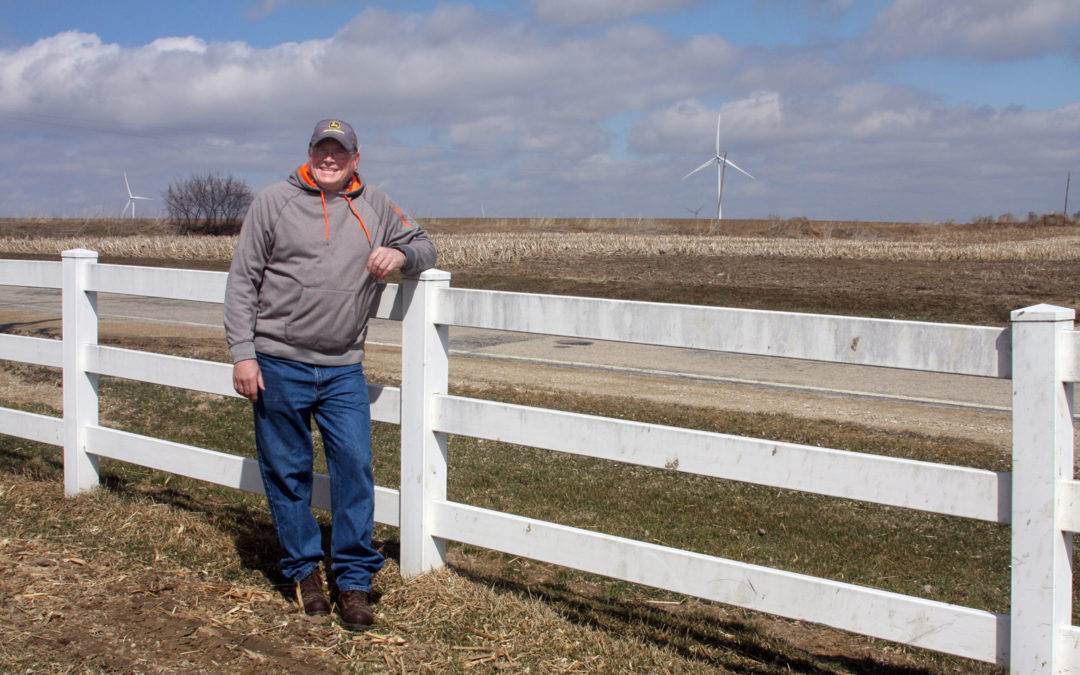
by Jodi Jean Amble | May 8, 2019 | Renewables, Wind
“Renewable energy is simple. It’s ancient technology. What was the first thing that came to this landscape 150 years ago? Wind mills to pump water. They were all over the place. They were needed to get water. These [wind turbines] are needed to run all of our electricity. It is the same thing, just a bigger scale.”
Tim McComish in many ways is the epitome of a Wisconsin farmer. He’s friendly, smart, and practical. His farm sits on 2000 acres in Lafayette County in the Township of Seymour, where he is also the Town Board Chairman. He has 250 dairy cows, grows crops, and now hosts a wind turbine that is part of the Quilt Block Wind Farm.
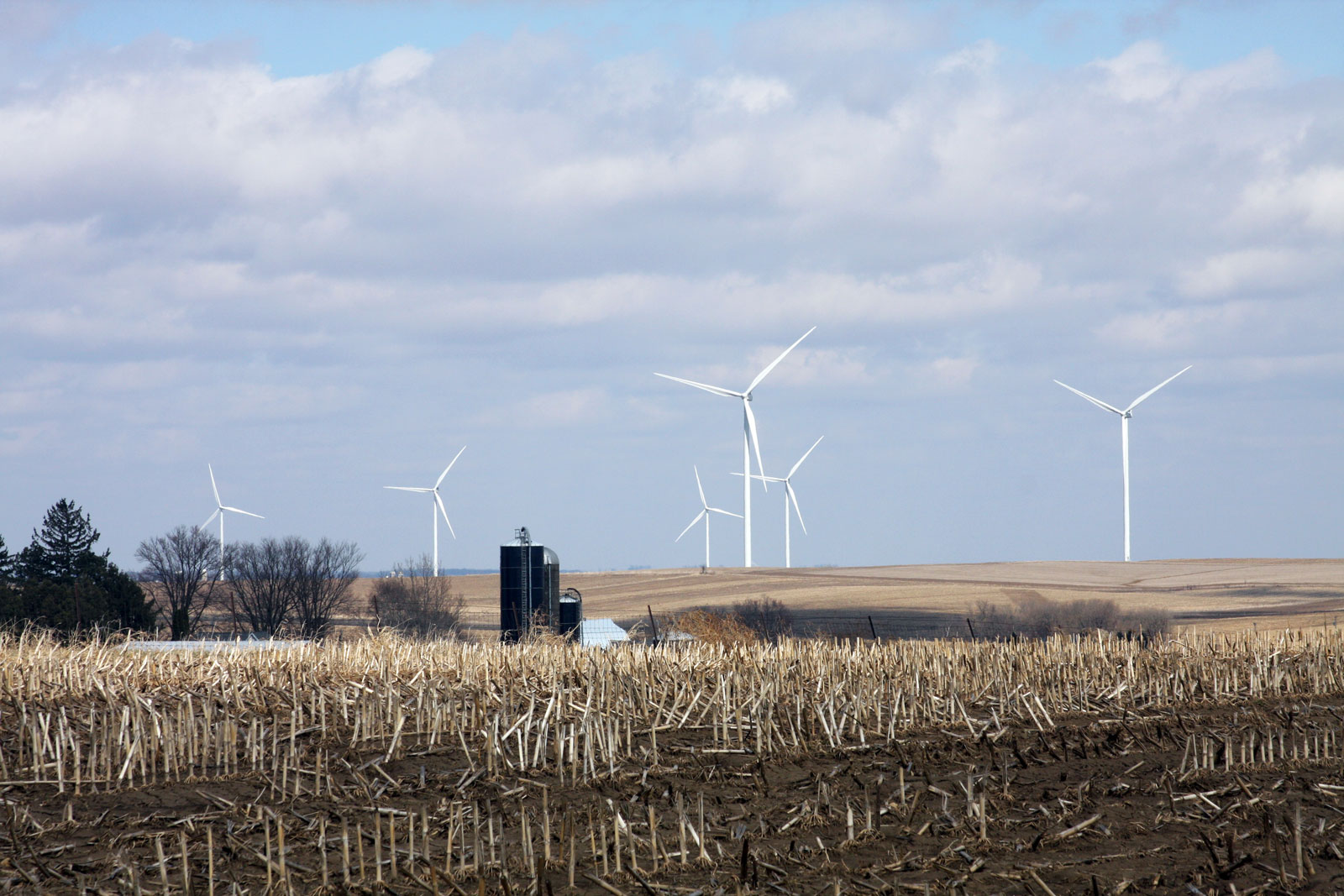
His great, great grandfather purchased the land in 1848. Now, Tim, his sons, and his brother are farming the land. They are also shepherding in the next generation of farmers, his grandkids. The McComish Family Farm is a seven generation operation.
Given the McComish history with the land and his leadership in the town, hosting the Quilt Block Wind Farm was not a decision that Tim took lightly.
“I was concerned that they [wind turbines] would be overwhelming. But I thought it was a neat thing and the economy was kind of poor then. And then meanwhile, grain prices went up and so people were not that concerned about it. Now things are back to how they were and believe me, there are farmers out here that these turbines are helping. If they have several on their property, it is making a big difference. And being on the town board, it is great what it is doing for the township.”
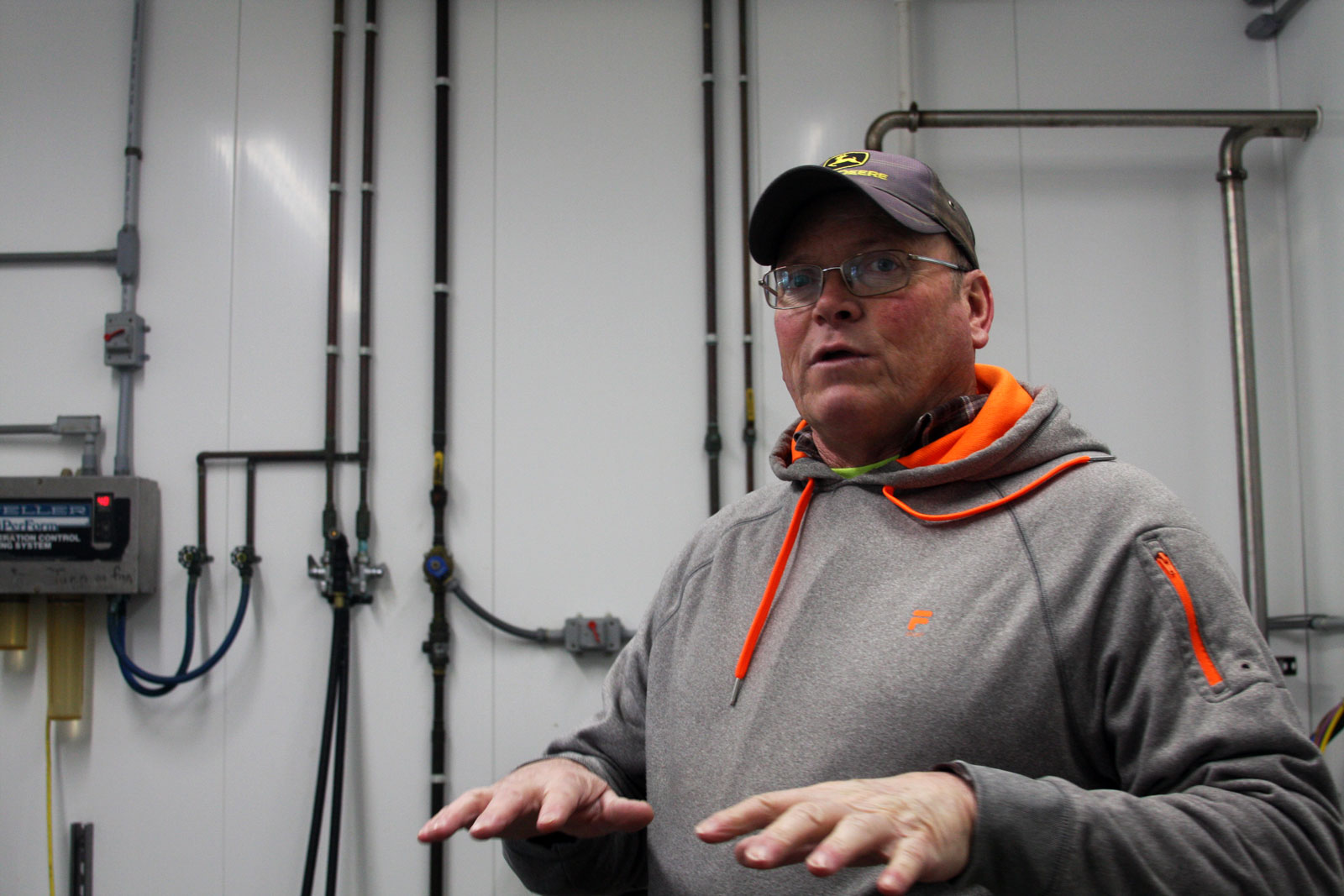
Tim’s support of renewable energy goes hand in hand with his stewardship to the land and his investment in energy efficiency on the farm.
“You have to do everything you can do to make the farm efficient. Most farmers are making those smart choices. With the energy rebates for the LED lights, it’s a no brainer. Everything we do around here is a cost savings.”
The McComish Farm efficiency measures even extend to water. Water is used to cool the milk initially which reduces the amount of Freon needed later. This same water exits the milking parlor through an underground tank and is reused to water the cows in the barn.
“These energy efficiency measures have all happened in the last 10 to 12 years. We doubled in herd size and our electric bill stayed the same. Just efficiencies. All these LED lights, even the vacuum pump.”
The McComish Farm no-tills just about everything, including corn and beans. This keeps all the carbon in the ground. The soil is tested so they know what the NPK (nitrogen, phosphorus, and potassium) is. They can knife in manure and it saves on fertilizer cost for the next year.
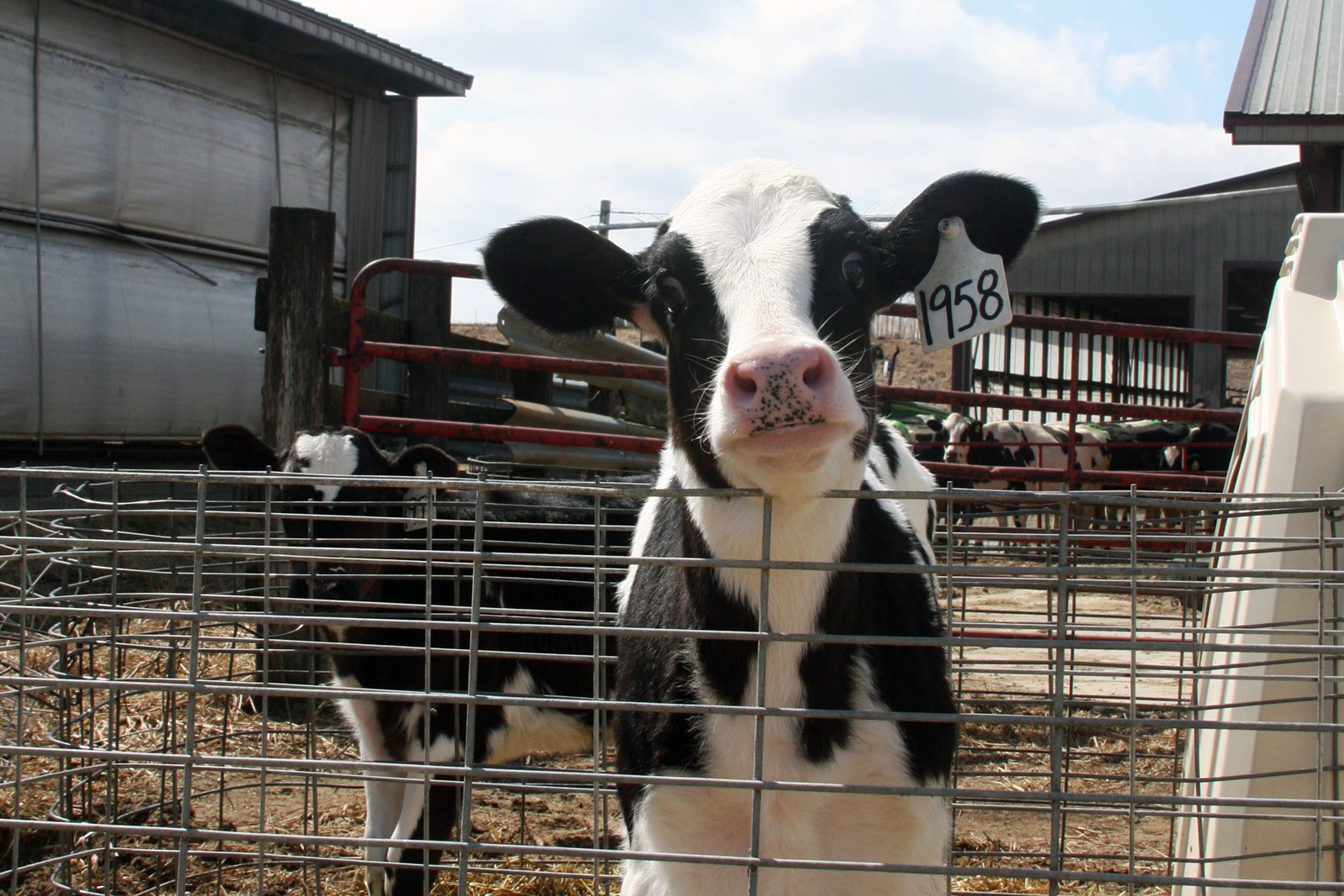
The McComish cows are beautiful. You can follow them in pictures on his daughter in law’s Instagram feed: cows_kids_and_cheese. The calves (mostly Holstein) are fed three times a day and when they are three months old, they are hauled to a neighboring farm where they are raised until they are about a year old, when they are brought back to breed. They calf about nine months later.
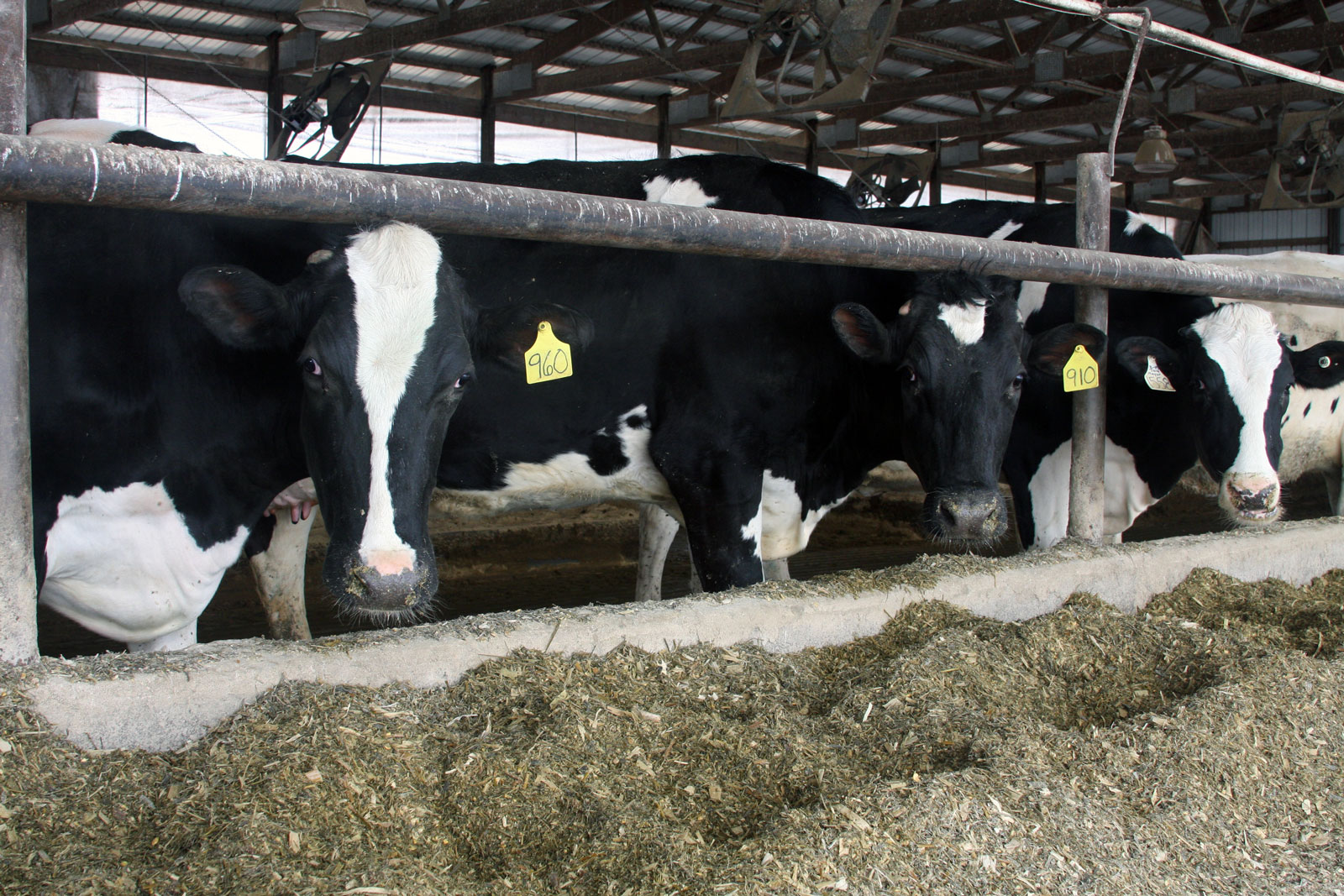
In the higher production barn the cows are all at their peak. The feed, silage, and ground corn are all mixed. The feed is tested in a lab so they are sure the cows have every nutrient they need. They grow everything except some of the protein sources they buy. They buy distillers grain which comes from ethanol plants. Everything is farm grown.
The cows have free stalls and can move and eat whenever they want. They have fresh water and sand is brought in every week because it is a forgiving bedding for the cows. In the summer, there are sprinklers to cool the cows off.
As with most farms, the manure from the cattle goes back into the field as fertilizer. There is a big lagoon that holds 2 million gallons of manure that gets pumped through a big drag line to the fields two or three miles away. “It is all environmentally friendly.”
Tim points to a dumpster overflowing with plastic.
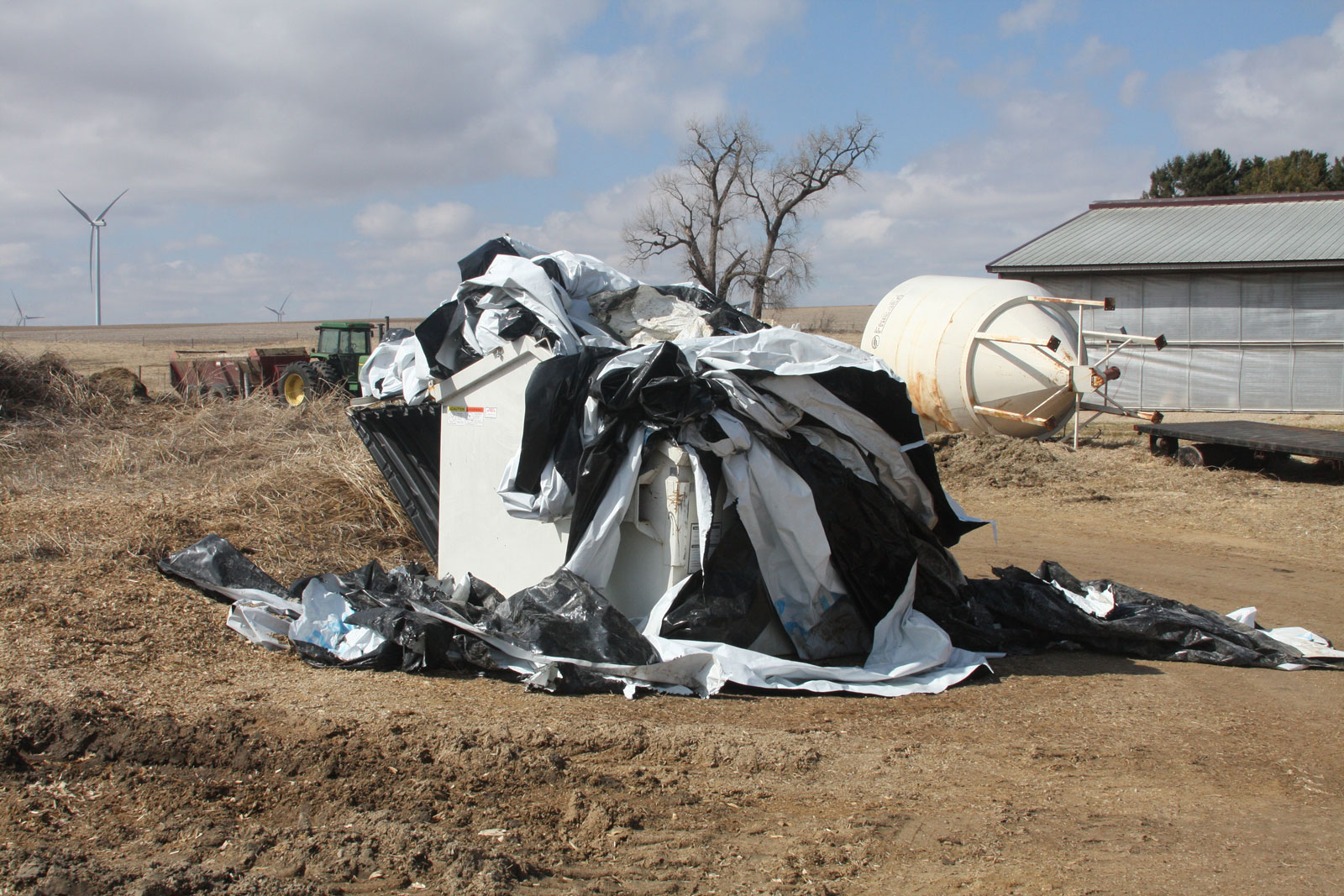
“See that ugly dumpster? That is supposed to be emptied but because of the trouble we are having with China and the trade recycling, they are not picking up our plastic. It has been two or three months since they have taken it. That plastic has always been recycled. I am recycling nut and I want everything to be used up.“
While Tim only hosts one turbine, his property is right in the middle of the 49-turbine Quilt Block Wind Farm covering a 6 square miles radius. The turbines have become a part of his rural landscape.
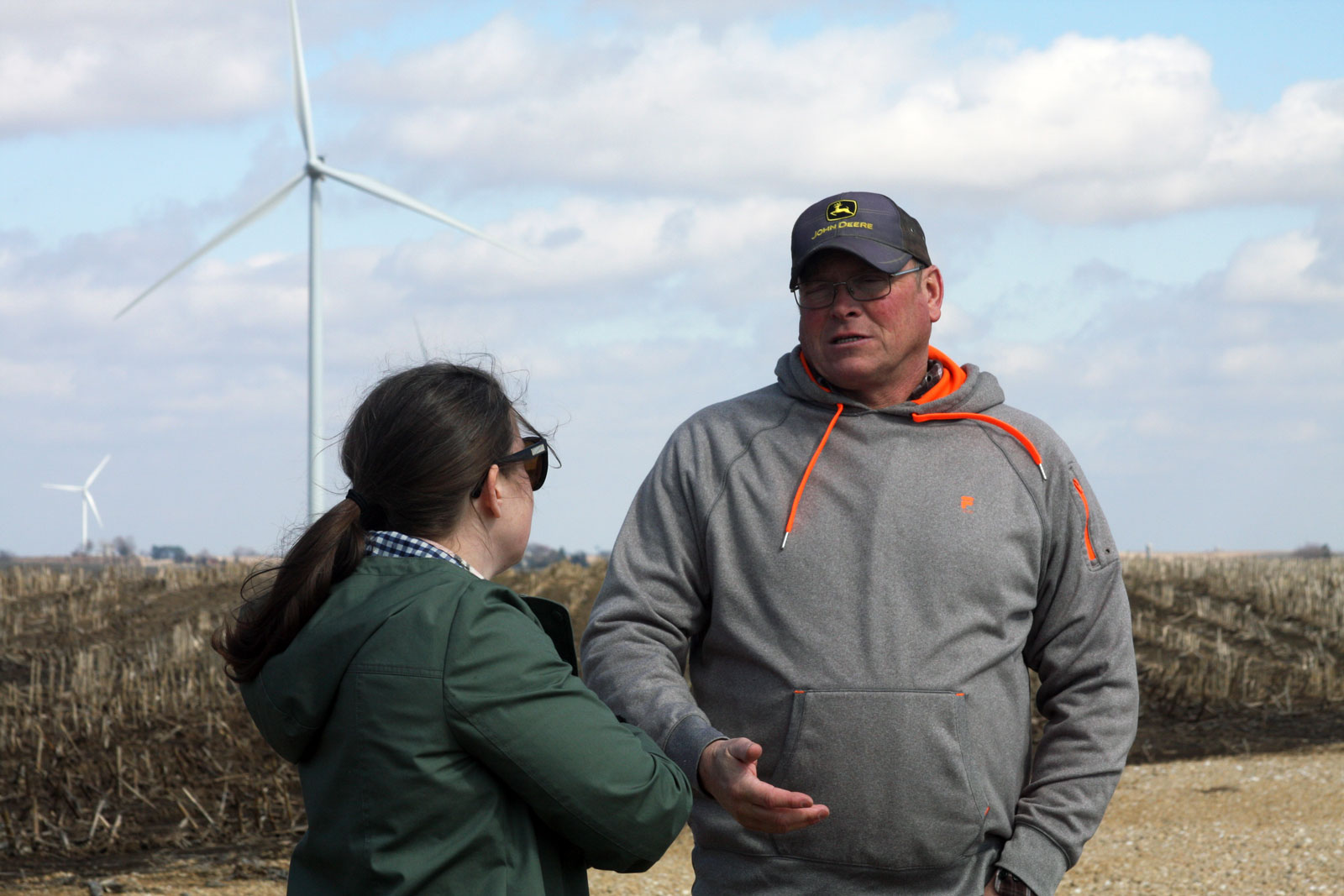
“I’d say I only see the flicker half the time, and it depends where you are. Most people, if the sun is coming in that hard they’ll shut their shades and won’t see the flicker then. It is really not something to be concerned about. The planes that put fungicide on the crops just fly right around them. And as far as dead birds, I guarantee you’ll count more dead birds a mile down the road than under the turbines. It’s just a farce. Anyone who is concerned about noise, here we are carrying a conversation.”
“What’s the difference between power lines, wind turbines and grain bins and silos. I mean if you live in the city you have skyscrapers. People think they are beautiful. And guess what, I think these are beautiful. These are my skyscrapers.”
